
I’ve had the great opportunity to take quite a few river cruises over the years, mostly in Europe traveling along rivers in Hungary, Austria, and France to name a few. With these experiences under my belt, I thought I knew what to expect before joining Viking River Cruises on a cruise along Portugal’s Douro River. I did not. No, due to the peculiarities of the river and the very special destination that is Portugal, a river cruise experience on the Douro is a singular event, totally unlike its cousins across the continent. While every day was honestly a lot of fun, these ports and stops were my favorite cruise experiences.
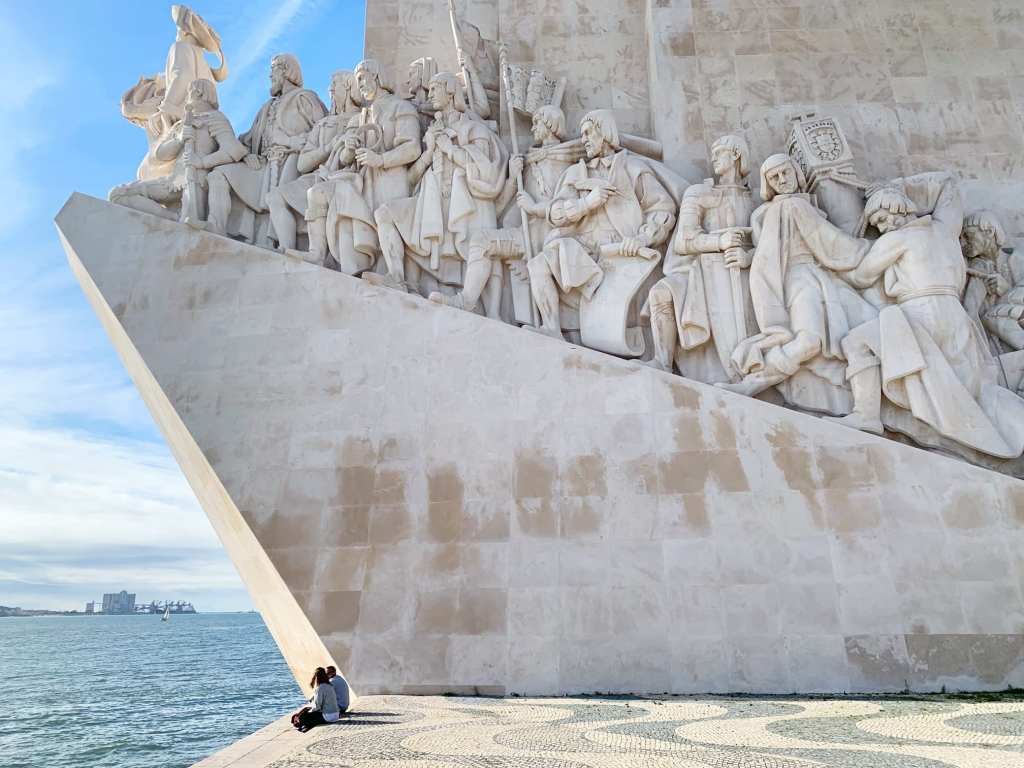
Lisbon
Several river cruise companies operate on Portugal’s Douro River, but few include time in Lisbon beforehand. Sure, they have options to pay for a pre-cruise experience, but on the cruise I took with Viking it was part of the total trip and, therefore, wasn’t an extra charge. For me, that time in the capital city was essential and a highlight of the trip. It was my first time in Lisbon and I couldn’t wait to get out and explore the city. What I discovered quickly became a new favorite destination, from the incredible architecture to the food and the remarkably kind people. Viking made my time there easy as well with transfers, lots of staff on-site to help and answer questions and a 5-star pre-cruise hotel on one of the city’s major thoroughfares. No matter how you ultimately decide to experience the Douro River though, having that time in Lisbon is, I think, important.

Porto
Cruises start and end in Porto, making this popular tourist destination an important part of anyone’s cruise experience. I didn’t know a lot about the city before arriving, but I had read dozens of accounts by fellow writers all lauding the ancient city, many even naming it the best in Europe. A natural skeptic, I went into my time there with some initial detachment, but I too fell for the allure of Porto. Porto is one of Europe’s oldest cities, founded in the 300s by the Romans and it’s Porto that eventually lent its name to the country of Portugal itself. Walking around the hilly city on a guided Viking hike, I found it impossible not to be charmed by the colors and sights of the historic center, while also trying to catch a view of the important Douro River whenever possible. I had plenty of time on my own in the city as well, and I used that time to delve even deeper into Porto’s neighborhoods and history, while also eating a fair amount of local delicacies along the way. Yes, Porto was another highlight of many for me on my Douro River Cruise, but I know I’m not unique in that feeling.

Salamanca
While of course the Douro River cruises are focused on Portugal, Viking also includes a daylong trip to one of Spain’s nearby gems, Salamanca. One of Europe’s oldest cities, it’s also one of prettiest on the continent – a type of beauty that not even a gloomy day could hide. Salamanca is most known for its university, originally founded in 1218 and which almost immediately became respected as one of Europe’s most important centers of learning. Salamanca again experienced a golden era when this spot, the Plaza Mayor, was built. Originally constructed with bullfighting in mind, today it is lined by restaurants, shops and cafes and is one of the city’s most recognizable meeting spots. Visiting Salamanca was just as special as I hoped it would be and I definitely understand why it’s one of the highlights for anyone cruising Portugal’s Douro River.

Favaios
Yes, Lisbon and Porto are amazing, but there’s a lot more to Portugal than its largest cities. The opportunity to visit small towns and villages isn’t just a perk of a Douro River sailing, it’s a reason why I love river cruising in general. Many times we visited spots I would never have discovered on my own, and my trip was made all the better for having experienced them. A great example on my sailing was the morning spent in Favaios. A very small community, it has long been known for its moscatel wines, which is where the Viking passengers started the day. Visiting a local winery, we learned all about the wine making process, before tasting some of their best vintages of course. From there we visited a local bakery to learn about and try the town’s equally famous four-cornered bread and ended our visit with a walk through the village and a stop at the local wine and bread museum (yes, really). Afterwards the Viking passengers were taken to another local winery for a long and leisurely lunch that was as much fun as I’ve had in a long time. Put all together, that day spent in a very small village was special, certainly unique and nothing I would have discovered on my own.

The Entire Douro River Valley
A big reason why many people choose to take a river cruise on the Douro River is for the wine, and Porto provides a hint as to why. Although wine has been produced in Portugal for more than 2,000 years, Port wine didn’t come about until the 1600s. I won’t go into what is ultimately a long story about the relationship between England and Portugal, but suffice it to say that their diplomatic friendship is the oldest in the world and Port wine has played an important role in this relationship for centuries. I’d like to say that fortified Port wine came about in some romantic fashion, but the truth is that the Portuguese developed it to better match the tastes of the English consumers. Eventually this wine, which was shipped from Porto (hence, Port wine) had brandy added to the juice during fermentation, creating a stronger and sweeter wine that was a perfect match for the palate of wealthy English clients. That history of Port wine is well-celebrated not only in the city of Porto, but all along the Douro Valley. Naturally, Viking provides plenty of opportunities to experience this unique wine in both included experiences as well as optional excursions. Food and wine isn’t only relegated to Porto, throughout the week passengers learn about the other wines produced in Portugal, along with the delicious food traditions that, when paired together, create meal experiences that are truly unforgettable.
European river cruises have skyrocketed in popularity in recent years for a variety of reasons and, from my experience, it’s well deserved attention. The cruises on the Douro River though are completely unlike others I’ve experienced, in all the best ways possible. So if you’re considering a river cruise but also looking for something a little different, I highly recommend learning more about the itineraries and programs Viking has put together on the Douro River.
The post My Favorite Stops on a Viking River Cruise in Portugal appeared first on LandLopers.

A few weeks ago I was approached by the fine folks at the Helsinki Freedom campaign to work with them on a project to promote Helsinki and to focus specifically on freedom as a topic. I jumped at the opportunity mostly because my one and only visit to Finland a few years ago was so much fun and so impactful that I was excited to once again write about one of the happiest spots on the planet. More than just write about things to see and do, I love the freedom topic because it’s at the heart of life in Finland and especially Helsinki. It’s a very egalitarian society with a strong emphasis on quality of life; something that is sorely lacking here in the U.S. The greatest aspect is that even as a visitor, no matter how briefly you’re there, you are instantly indoctrinated into this unique lifestyle as perhaps best exemplified in the greatest gift the Finns gave to the world, sauna.

The Importance of Sauna
While many cultures around the world have types of saunas, the Finns take great pride in the claim that they have one of the oldest and continuously active sauna cultures in the world. The Finnish sauna started more than 2,000 years ago and was little more than a modest burrow in the earth in which a pile of stones heated for the bathing process were added. Because, ultimately, that’s what sauna really is – a way to get clean. Water thrown onto the hot stones give off vapor, which makes the bather sweat. Before leaving the sauna, it is still common today to either douse yourself with water, or to have a permanent tub installed inside the sauna. This natural process of sweat bath followed by cleansing isn’t only intensely healthy; it’s an incredibly important aspect of Finnish society.
There’s an old Finnish saying that Finns live and die in the sauna. At first I smiled thinking it was just a nice example of flowery speech, but it’s actually literally true. Naturally there are rules associated with taking a sauna, but they’re more guidelines than rules and not once was I chastised for not knowing any better. That’s because at its core, sauna is all about personal freedom.

How Sauna Changed My Life
Among the rules is that sauna goers should be naked, something that still causes my fellow Americans to unconsciously shiver. Yet the societal mores in Finland are different, and chatting with someone in Helsinki, I began to understand why these concerns about being naked don’t exist in Finland. He said growing up going to sauna several times a week and seeing all different kinds of people naked means that Finns don’t usually suffer from the same body-image issues that the rest of the world can’t seem to escape. “I just understood that everyone looked different and that was ok,” he went on to say – a refreshingly open and healthy attitude. This was a revolutionary concept for me.
Like so many other people, I have dealt with body image problems my entire life – I still do if we’re being honest. I never accepted that I was enough, that I didn’t have to be “better,” whatever that means. Sitting there without a scrap of clothing on, I began the long process of self-acceptance and learning that I can be great just the way I am. That concept has been so freeing for me, I don’t have the words to properly share its impact. Freedom is subjective, freedom has many definitions and connotations but for me I have never felt as free and alive as I did sitting there in a warm sauna in Helsinki.
Finland and Helsinki in particular will always have a part of my heart reserved and I can’t wait to return to experience not only this definition of freedom again, but to discover new shades of the word as well.
The post Sauna and Finding the Ultimate Freedom in Helsinki appeared first on LandLopers.

I’m not going to say it, I’m not. I’m bored with saying that this year has been: challenging, terrible, rough – name your adjective. But, I think we all know 2020 has been a jerk in almost every way. December is usually my favorite time of year to travel because I normally visit spots where I can celebrate the Christmas season and really get into the spirit of things. It doesn’t hurt that it’s also usually low season in many parts of the world, adding modest crowds and lower prices to the reasons why I always early look forward to my Yuletide travels. Of course, like everything else, 2020 has taken this yearly tradition away from me as well. Rather than sit here and sulk, which I am in fact doing, I instead want to share some of my favorite places around the world to travel in December. Some may make sense, others may not but I promise they’re all a lot of fun. While it’s also true one cannot enjoy these trips in 2020, hopefully by 2021 they will once again be coveted travel destinations.
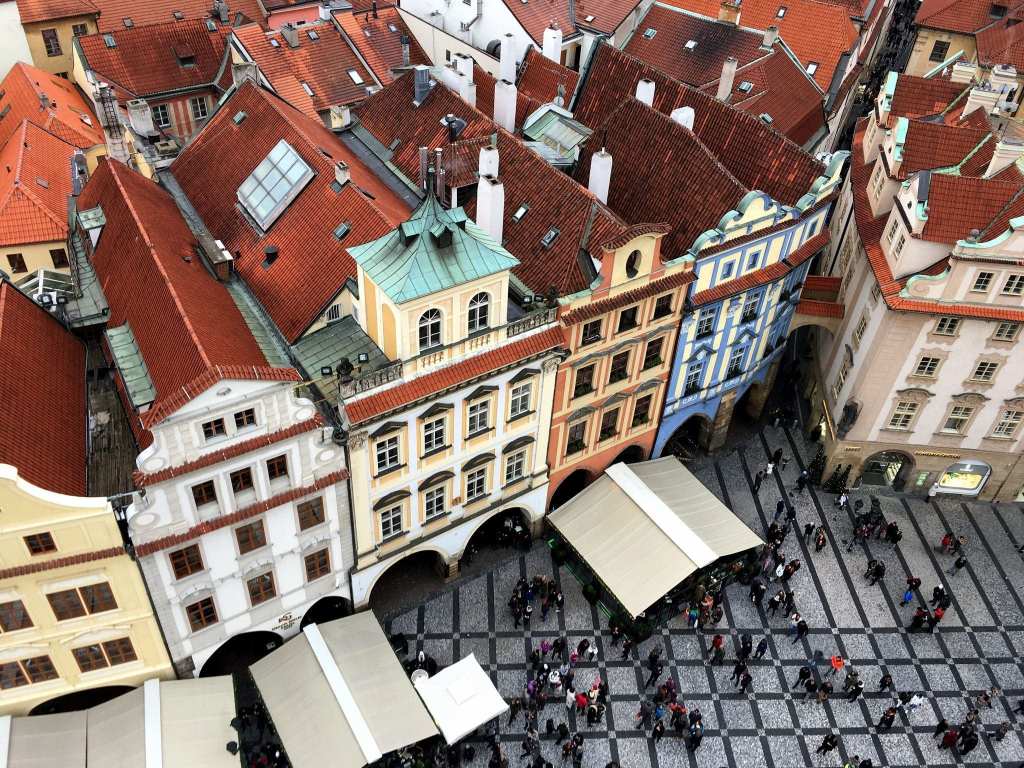
Czech Republic (Czechia)
In the few weeks before Christmas, Prague somehow elevates itself into a holiday experience the likes of which I had never before witnessed. I’ve visited many Christmas markets around Europe and without a doubt, not only does Prague embrace the season more so than most others, but it’s a lot more fun to visit as well. The focal point of Christmas festivities in Prague is at the Old Town Square, where most of the most popular sites in the city are found. The massive market takes place every year in front of the massive church Our Lady before Týn and Old Town Hall. It’s large, it gets busy but it’s also a lot of fun. Having spent (and enjoyed) a week beforehand touring Germany, it was nice to see some different foods and drinks offered, along with entertainment and gifts. It reminded me of why I love visiting a variety of European countries around Christmas and the overall effect was nothing short of transformative. The best way to get an idea of the enormity of the central Christmas market is to visit the top of the Old Town Hall Tower, an easy to visit site with views you have to see to believe.
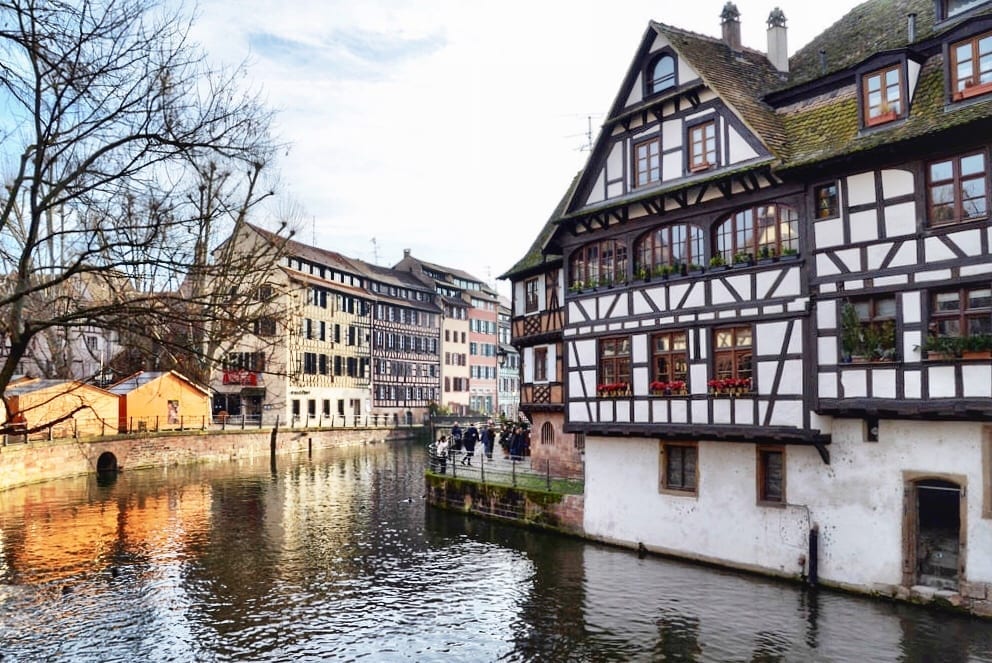
France
When hard-pressed, I usually say that France is my favorite country in the world to visit. I have a strong emotional connection to it, I speak French and I love the culture. I’ve never had a bad time visiting France and that’s particularly true in December. While the weather is nothing to write home about, France has some amazing Christmas Markets and arguably the best one is found in Strasbourg. This large city in the heart of Alsace was a great introduction not only to this fascinating region, but also to French Christmas market traditions. The Alsace region has a troubled history, ping-ponging between French and German possession over the years, you’ll find a strong influence from both cultures all around town. This unique background necessarily affects the food and in the markets I discovered everything from foie gras sandwiches to traditional beignets. There’s not just one Christmas market in Strasbourg though, there are many strewn all around, which makes an exploration of the downtown area fun and filled with yuletide surprises almost anywhere you go. Every region has their own culinary specialties and while Strasbourg has many, it’s well known for its collective love of pretzels. You’ll find them in every size and shape and even lunch versions, topped with far-too-generous amounts of cheese.
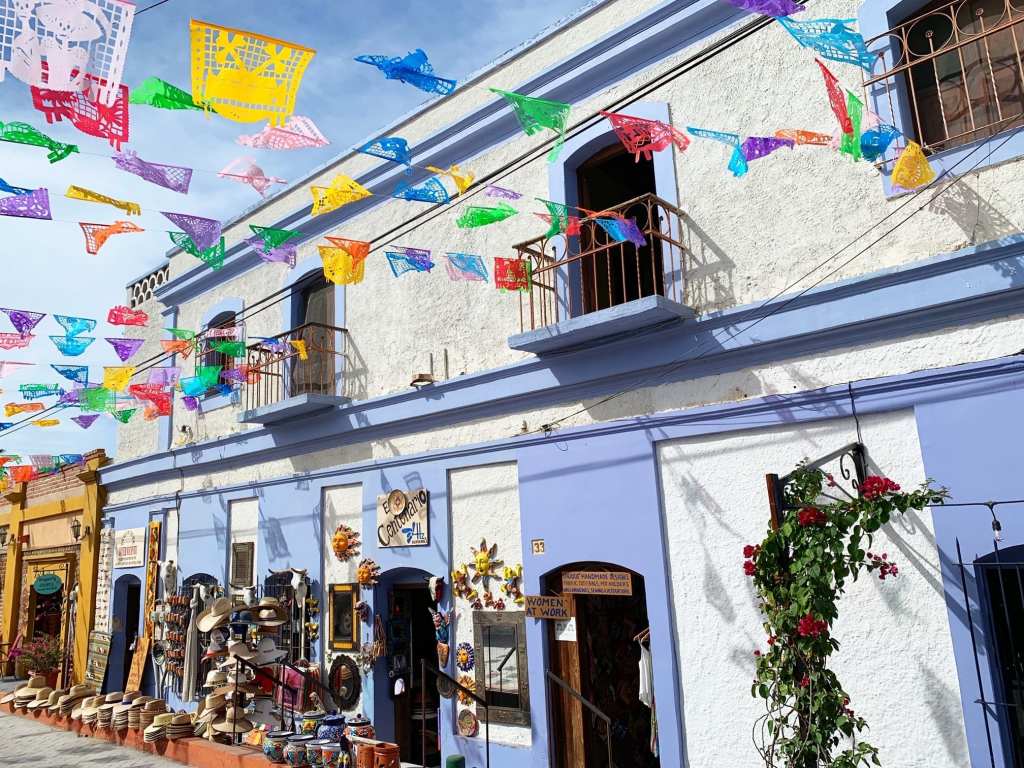
Mexico
I don’t go to Europe every December though, I like to alternate with different styles of experiences. One recent favorite was a luxury cruise along the Mexican Riviera onboard an amazing Crystal Cruises ship. While every port of call offered something new and fun to experience, one of my favorites was a side trip to the small town of Todos Santos. Walking around the old historic core, the vibrant colors of the buildings and the incredible wintertime weather all left me completely entranced. Turns out I’m not alone, Todos Santos has been quietly gaining a lot of attention by tourists in the know and even the Mexican government named it a Pueblo Magico, one of just 100 or so communities around Mexico recognized for its natural beauty, cultural richness and history. I’d never heard of this small town along the coast before, but I know it’s a spot that I won’t soon forget.
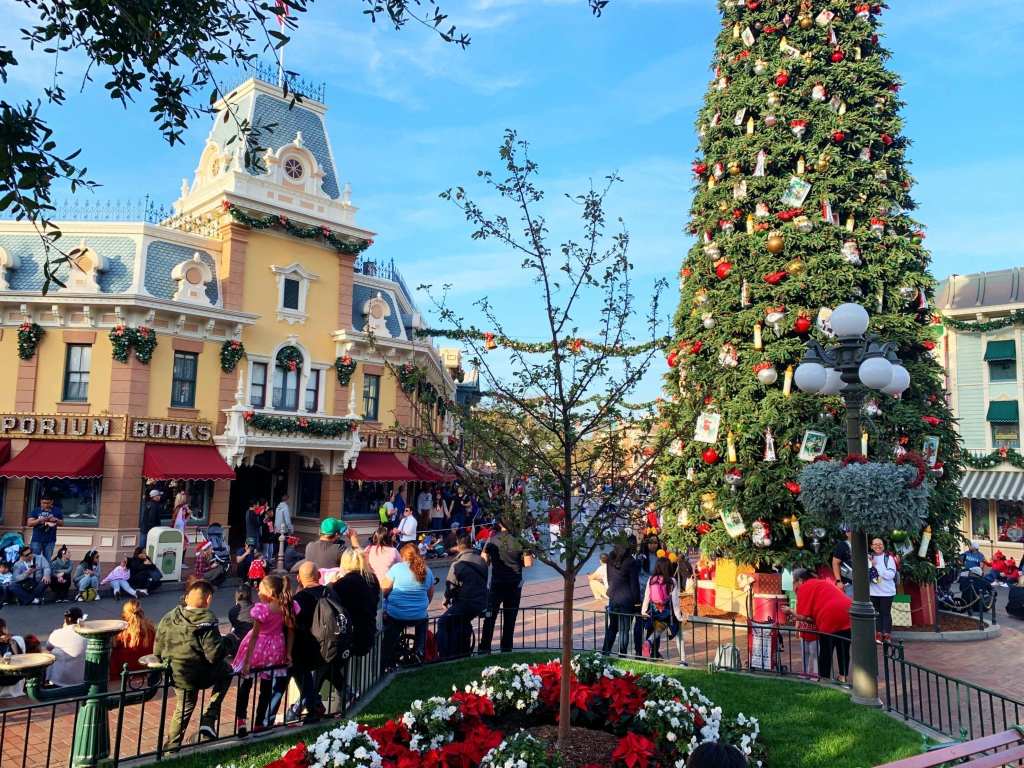
Disneyland
I’m a Disney Parks fan, so naturally I had to include my favorite park – Disneyland. Sadly this Anaheim institution remains closed, but hopefully it will be open in 2021 so I can once again enjoy the holiday transformation that takes place every year. When I planned a trip in December, I was a little concerned that I wouldn’t get the holiday feeling that I love so much, but I need not have worried. Disney does Christmas extremely well and being in the park just a few days before Christmas dramatically improved my overall holiday experience. Disneyland is a special place, especially for adults. In a world that is increasingly mean and chaotic, it remains a destination seemingly devoid of problems. That’s remarkable and to feel an honest sort of happiness for two days was the ideal way to finish the year. One of the many reasons why I love Disney is for the resort’s ability to transport guests to an easier and simpler time. For a brief few days, everything seems right in the world, and during Christmas this feeling is only enhanced. Everyone seemed happy, the decorations were festive and Christmas carols played in the background. It was a wonderful way to embrace the holiday spirit and I know it won’t be the last time that I experience Disney during the holiday season.

Portugal
Last year, just a couple of months before the world closed, I had the great opportunity to once again sail with Viking Cruises on a river cruise in Portugal. It was my first time visiting the country and while I sincerely loved every moment, my time spent in Porto was what I enjoyed the most. Cruises start and end in Porto, making this popular tourist destination an important part of anyone’s cruise experience. I didn’t know a lot about the city before arriving, but I had read dozens of accounts by fellow writers all lauding the ancient city, many even naming it the best in Europe. A natural skeptic, I went into my time there with some initial detachment, but I too fell for the allure of Porto. Porto is one of Europe’s oldest cities, founded in the 300s by the Romans and it’s Porto that eventually lent its name to the country of Portugal itself. Walking around the hilly city on a guided Viking hike, I found it impossible not to be charmed by the colors and sights of the historic center, while also trying to catch a view of the important Douro River whenever possible. I had plenty of time on my own in the city as well, and I used that time to delve even deeper into Porto’s neighborhoods and history, while also eating a fair amount of local delicacies along the way. Yes, Porto was another highlight of many for me on my Douro River Cruise, but I know I’m not unique in that feeling.

Nuremberg, Germany
The granddaddy of all German Christmas markets, I’ve been fortunate to visit this famous market not once, but twice. Given the size of the market, it’s important to be strategic otherwise it’s easy to lose track of time. In my case that meant local delicacies I can only find in Nuremberg. Every German city, town and village has a variation of sausage and my own personal favorite is found in Nuremberg. Small sausages grilled to perfection and then served three to a bun make for a manageable but delicious snack or meal. Another snack that varies around Germany are Lebkuchen, sort of like gingerbread cookies but not really. Once again, Nuremberg is home to my personal favorite version of this holiday treat and not only did I eat a few that afternoon, but I made sure to stock up for the entire Christmas season. The Nuremberg Christmas market is famous for a reason, it’s enormous and fun, but of course this year it too is a victim of COVID. Like so many other annual celebrations, the market has been cancelled out of necessity, but you can still learn more about the remarkable experience of visiting through this video that Germany Tourism shared with me. (No, this isn’t sponsored in any way, I simply love the German Christmas Markets that much and want to help share the message.)
What are some of your favorite December travel destinations?
The post My Favorite December Getaways When There’s Not a Pandemic appeared first on LandLopers.

In the past, it has been an understatement to call me a travel over-planner. There is no term really to describe the levels to which I would typically plan the fun out of a trip. It always came from a good place, an excitement for the adventure coupled with the desire to not miss anything. Except over-planning is one of the best ways to ruin a trip, whether or not you’re able to tick everything off of your list. Truly understanding this theory of travel has taken me far longer than it should have, but when I visited Portugal I put my newfound acceptance of a more laid back style of travel into practice. It did indeed make me a happier person and enabled me to experience places I probably wouldn’t have had I planned out every second of my day. The best example of this was my unplanned daytrip to nearby Sintra, a town any visitor to Lisbon should really have on their to do list. So how did I end up in Sintra and what did I find? Let’s find out.

The Sintra Proposition
I was in Lisbon to join a fantastic river cruise with Viking along Portugal’s Douro River, but I arrived a couple of days in advance since it was my first time in the city. I had a general idea of the places I wanted to go and famous sights I wanted to explore, but nothing concrete and certainly not the complicated itineraries of previous trips. In conducting my pre-trip research I learned about Sintra, a commonly recommended daytrip option for visitors to Lisbon. It sounded interesting and certainly a place I would enjoy, I just didn’t think I’d have time to spend an entire day there while also seeing everything in Lisbon. The capital city was my priority and so I forgot about Sintra almost immediately. But then I arrived into Portugal and Sintra would not leave me alone.
Checking into my hotel, the Corinthia Lisbon, I was asked about my plans and when the concierge learned they didn’t include Sintra, she seemed truly saddened. Over the course of two days this was a common occurrence, and almost everywhere I went people told me that I HAD to make time for Sintra. Feeling as if the universe was shouting at me, I decided to shift a few things around and committed myself to taking the short train ride out to Sintra to see what all the fuss was about.

Sintra Made Easy
My first inclination was to book a daytrip through a local
company that would include transportation and guiding. But the overtime length
of the trip was around 10-12 hours, and I didn’t want to lock myself in with a
group for that long. From my experience those tours include too much free time
at uninteresting spots, so I started to research the logistics of going on my
own. Google once again saved the day and even directed me to blog posts from a
couple friends of mine who, as luck would have it, provided excellent advice on
how to easily and quickly travel to Sintra.
The train ride from Lisbon to Sintra is only about 45
minutes and trains leave from the Rossio station frequently throughout the day,
just be sure to check the timetable before making plans. The tickets are very
inexpensive, about 5 Euro for a return trip but as I entered the station I
noticed a poster for a Sintra package deal that I decided to purchase. In
conducting my very speedy research, I knew that once I arrived into Sintra I
would need to get tickets for the circuit bus (#434) that follows the tourist
loop to the top sights around town. I would naturally also have to pay for
admission to these palaces, so I’m glad I noticed that poster for the Sintra
Green Card. Prices change so I won’t list them, but the card bundled everything
I needed to do conveniently and was even cheaper than buying everything à la
carte. Since I was unsure about the process of buying bus tickets, this was an
easy choice for me. The card worked seamlessly and really did make my day
easier than it would have been otherwise. Once I arrived into Sintra, I found
the bus and started my adventure around this historic town.

Why Visit Sintra
Sintra is a UNESCO World Heritage Site thanks to its
incredible cultural landscape; a history that spans the centuries from the
Moors to the Portuguese royals. This peaceful spot in the hills was the summer
retreat for the rich and privileged and over the years many palaces and
elaborate estates were built to show off that wealth and prestige. It’s into
this posh getaway that thousands venture every day, including myself. A major
reason why people visit is to admire the beauty of these spots, but on the day
I visited there was one glaring problem – the weather was terrible. It poured,
and I mean poured, almost all day and the fog greatly obscured the most
beautiful of these famous palaces. The day was still fun though and the palaces
I detail below are well worth visiting, no matter what the weather is like.
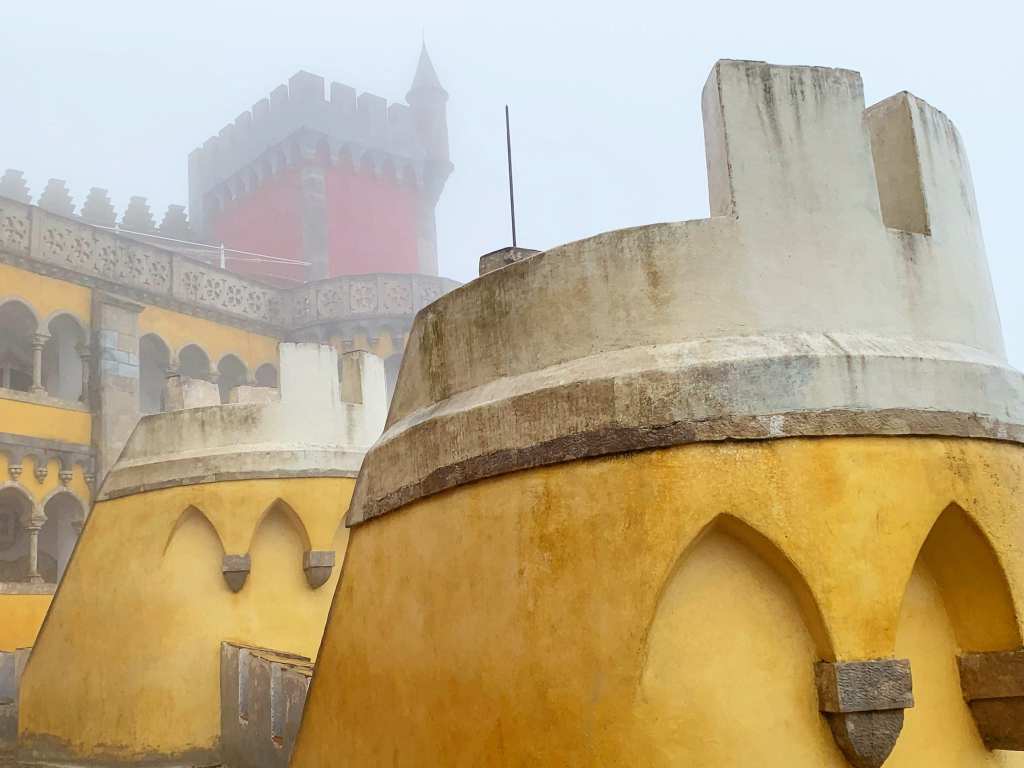
Pena Palace
One of the most important buildings in Portugal,
walking up to this colorful fortress felt like approaching a real life fairy
tale castle. Built on the site of a ruined monastery, King Ferdinand II
commissioned the opulent and strangely designed palace in the mid-19th century in
what is now recognized as the height of Romanticism. Islamic elements, vault
arches, Medieval design and more all combine to create what really is a
building you’ll never forget.

National Palace of Sintra
Located in the center of Sintra’s touristy old town,
it’s hard to miss this massive building. The National Palace is the
best-preserved medieval royal residence in Portugal and was the holiday getaway
for royals from the 15th to 19th centuries. Like the other palaces, the tour is
self-guided and follows a well-marked path. Inside the rooms are elaborately
decorated and offer a peek into what life was like for the super-elite.

Queluz Palace & Moorish Castle
This is where the weather really impacted what I was
able to see and do. Since the downpour was torrential, I decided not to visit
these two sights – it just wasn’t reasonable given the conditions. But, they’re
commonly included on the so-called Sintra circuit, which is why I mention them
now. Queluz is just really a grand house and estate rather a palace per se, but
is known as a great example of Rococo design. The real draw here, and why I
didn’t visit, are the elaborate gardens that are worth a meander through if the
weather is decent. The Moorish Castle is actually just a collection of ruins,
and the reason to visit is for the incredible views across the region to
Lisbon. Since the fog was pea soup when I was there, I decided the trek wasn’t
worth the effort. And I was right.

Sintra Itself
What doesn’t get enough attention, at least not that
I could find, is the town of Sintra itself. Undeniably cute, even on a terrible
day, I enjoyed wandering around the labyrinthine old alleyways and making my
own discoveries. I escaped the weather by enjoying a nice lunch, followed by
some gelato before catching the bus back to the train station and my return to
Lisbon.
Ultimately, I’m happy that I decided to switch some plans
around and spend the day exploring Sintra. Do I wish the weather had been
better? Sure, but it was December and honestly to be expected. It was nice to
leave Lisbon and see a different part of the region and Sintra is one of the
best ways to do that if you’re staying in Lisbon. I’m proud of myself as well
though for not overscheduling my visit and allowing for somewhat spontaneous
decisions like visiting Sintra. I hope it’s a new trend for me because it
really did make the entire Portugal trip much more pleasant than it would have
been otherwise.
The post An Unexpected Daytrip to Sintra, Portugal appeared first on LandLopers.

Portugal is enjoying a bit of a moment currently. Scores of travel publications have listed it as a must-visit destination and tourists are responding by planning trips not only to Lisbon, but other parts of the country as well. One of the most popular ways to experience Portugal is by taking a cruise on the scenic Douro River, which is exactly where I found myself a couple of months ago. Sailing once again with Viking Cruises, I knew what to expect from the company, but the destination was a complete mystery to me. One of the many highlights of my first trip to Portugal though was spending plenty of time in one of the country’s most popular tourist spots, Porto. I certainly wasn’t the first to be wowed by this colorful city and I know I won’t be the last, so to help plan your time in Porto I want to share some of my favorite experiences as I explored the city with Viking Cruises.
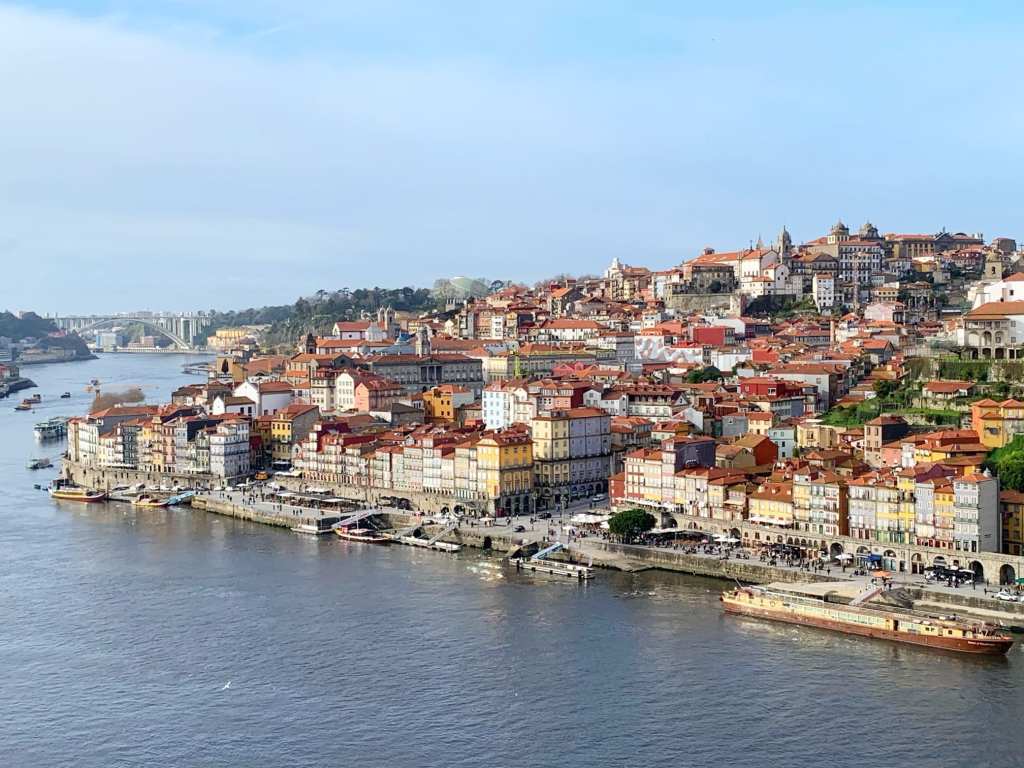
Views from every vantage point
Cruises start and end in Porto, making this popular tourist
destination an important part of anyone’s cruise experience. I didn’t know a
lot about the city before arriving, but I had read dozens of accounts by fellow
writers all lauding the ancient city, many even naming it the best in Europe. A
natural skeptic, I went into my time there with some initial detachment, but I
too fell for the allure of Porto. Porto is one of Europe’s oldest cities,
founded in the 300s by the Romans and it’s Porto that eventually lent its name
to the country of Portugal itself. Walking around the hilly city on a guided
Viking hike, I found it impossible not to be charmed by the colors and sights
of the historic center, while also trying to catch a view of the important
Douro River whenever possible. Luckily that’s an easy feat to achieve in Porto.
Built on hills surrounding the Douro River, there are scores of amazing spots
from which to admire the city, but my favorite happened almost right away.
River cruise ships dock across the river in Vila Nova da Gaia and tackling the
short and easy walk across the Dom Luís I Bridge wasn’t just a nice way to get
into Porto, but it’s from there where I enjoyed my favorite panoramic vantage
point. If you don’t feel like walking, you can also take the nearby cable car
that offers its own unique views of the city as well.

Food & wine
A big reason why many people choose to take a river cruise
on the Douro River is for the wine, and Porto provides a hint as to why.
Although wine has been produced in Portugal for more than 2,000 years, Port
wine didn’t come about until the 1600s. I won’t go into what is ultimately a
long story about the relationship between England and Portugal, but suffice it
to say that their diplomatic friendship is the oldest in the world and Port
wine has played an important role in this relationship for centuries. I’d like
to say that fortified Port wine came about in some romantic fashion, but the
truth is that the Portuguese developed it to better match the tastes of the
English consumers. Eventually this wine, which was shipped from Porto (hence,
Port wine) had brandy added to the juice during fermentation, creating a
stronger and sweeter wine that was a perfect match for the palate of wealthy
English clients.
There are seemingly countless ways to experience Port wine, including an optional excursion offered by Viking. Although I didn’t take it, I spoke with fellow passengers who booked the port wine dinner inside a nearby winery and for them it was the trip highlight. For something a little more laid back though, there’s nothing better than finding a quiet restaurant and creating your own wine dinner.

Quirky discoveries
Porto is an intensely popular tourist destination and along
with that comes a certain circuit that most people follow around town. That’s
one reason why I didn’t expect to find anything strange, quirky or unusual but
by the end of my time there, those off-kilter moments were amongst my most
favorite. It was also a good reminder for me to always be vigilant and to enter
any new city with an open mind. Granted, some of these experiences were more
interesting than others, and they’re mentioned in most guidebooks so I’m
sharing them not to brag about some new discovery, but to encourage you not to
skip them.

McDonald’s Imperial – Before you criticize me, please first read on. Yes, I have written about the cultural importance of visiting McDonald’s restaurants around the world, but that’s not why it’s on this list. No, in Porto one of the most-visited spots is this unlikely fast food establishment in the heart of the city. This location opened in 1995 in the historic Imperial Cafe. Established as a coffee shop in the 1930s, the owners went through a painstaking process to preserve and bring back to life all of those amazing Art Deco details. Even if you don’t eat anything, it’s well worth a visit to admire the old stained glass windows and other iconic features.

Livaria Lello – Even though I consider myself to be a Harry Potter fan, I had no idea that Porto has a connection with author J.K. Rowling until my visit. The Livaria Lello isn’t just one of the world’s most stunning bookstores, it’s also rumored to have inspired many of Rowling’s depictions of Hogwarts. She lived in Porto and was a frequent customer of the bookstore, no doubt attracted by the winding staircases and other incredible architectural flourishes. The owners had a problem though. Once fans learned of the connection, they flooded the bookstore forcing out paying customers. So, the bookstore has a nominal entrance fee, which is refunded when you make a purchase. Even if you aren’t a Potterhead it’s well worth a visit because, yes, it really is that beautiful.

São Bento railway station – Another not to miss spot for lovers of design and architecture is the São Bento railway station. Inaugurated in 1916, the centrally located station is still a busy place more than a century later, but it’s not only for the trains that people visit. Lining the front vestibule are 20,000 azulejo tiles, representing moments in the country’s history as well as rural scenes showing the people of various regions. The central theme though is transportation through the ages, but more than the representations the tiles are works of art in their own right and should be high on your sightseeing to-do list.

Clérigos bell tower – One thing I love to do anywhere I go is to seek out vantage points that put me high above the surrounding city. That usually leads me to church towers, and in Porto it was the baroque Clérigos church that offered me the opportunity to climb. The tower is 75 meters high and it takes 240 steps to reach the top, but believe me it’s worth the effort. I was lucky with incredible weather that provided amazing views of Porto in all directions.

World of Discoveries – Yes, it looks hokey and yes, it was a little hokey. I was stuck though; it was pouring throughout my last day in Porto and I frankly needed something to do. I love history and wanted to know more about Portugal’s Golden Age and when I learned that they also had a theme park-esque ride, I was sold. World of Discoveries is an interactive museum that does a great job of using technology and engaging exhibits to bring to life the voyages of the Portuguese navigators. It really was an interesting museum and I did indeed learn a lot, and I even enjoyed the theme park portion of the experience. The capstone experience is boarding a “ship” and floating along learning about the parts of the world Portuguese laid claim to and how those colonies impacted life not only in Portugal, but around the world. Overall, it’s not a bad museum but it is a little pricey, so make sure you’re really interested before going.
Have you been to Porto? What would you add to this list?
The post My Favorite Moments Exploring Porto, Portugal appeared first on LandLopers.

I’ve been on many cruises in all parts of the world, from an expeditionary cruise in Antarctica to a river cruise in Myanmar. When both ocean and river cruises are combined though, I have sailed with Viking more often than any other cruise line and they’re a company that I have come to know very well over the years. That was one reason of many why I was excited to join them on a sailing of Portugal’s much-lauded Douro River. To be honest, the cruise had its issues that were all caused by Mother Nature, and I’ll touch on those along with how Viking handled the problems presented to them. But I’ll also try to talk about the cruise from a higher level since, ideally, historic levels of flooding are not the norm for the average cruiser in Portugal.
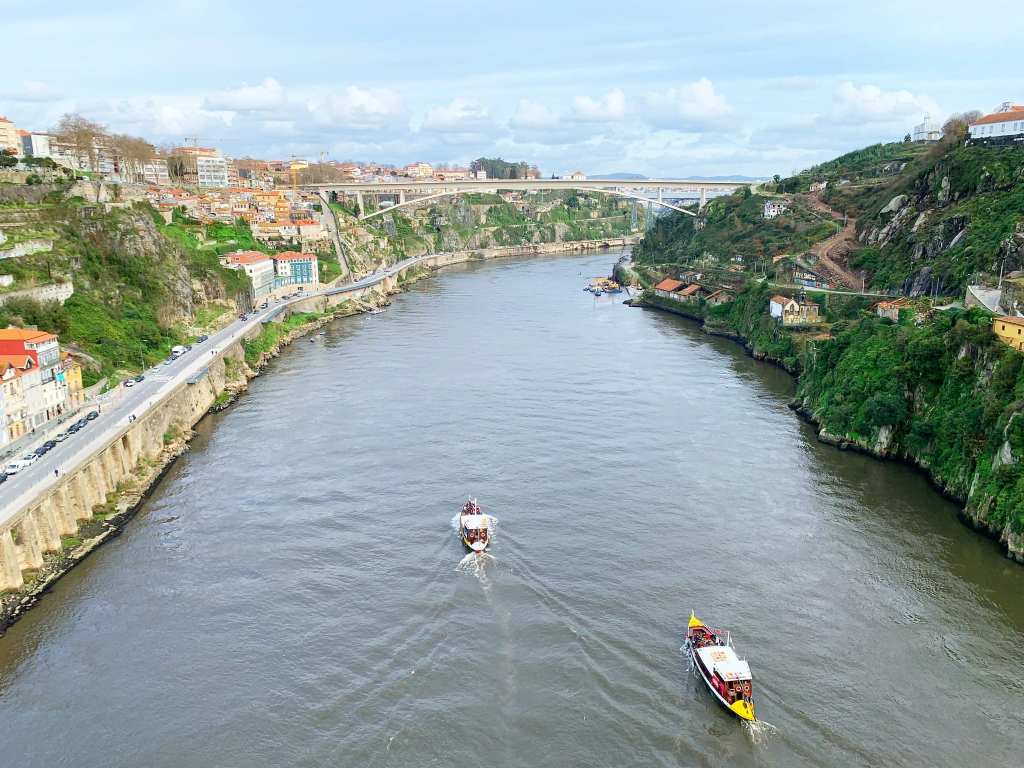
The Basics
In recent years it seems like Portugal has made it to the
Must-Visit lists of nearly every major travel publication, and along with it
the Douro River. One of the oldest continuously inhabited parts of Europe,
there’s plenty of history to be found throughout the many communities that abut
the Douro, starting in the ancient city of Porto. Cruise ships leave from this
hilly city, but most itineraries will include a land-based portion in Lisbon
before the start of the cruise. Passengers are then bussed to Porto where the
cruise itself starts. From there the ship winds its way through the valleys
best known for their wines and culinary expertise. There are no big cities once
you leave Porto and for many cruisers the experience is very much focused on
the food and wine of the country.

The Ships
I have sailed with Viking many times in all corners of Europe, and I have come to know and love the design and amenities onboard their signature Longships. So it was with a lot of surprise that I first stepped onboard the Longship docked in Porto, because, while beautiful, this was not the Longship I have come to know so well over the years. The Douro River is navigable only due to a series of locks, not unlike many other European rivers. The key difference in Portugal is the size of these locks. They’re different than on the Danube or Rhine, which means the ships must also be different. The result is a fleet of “Baby Longships” that only sail on the Douro River. They have the same general layout, the same design aesthetic and other amenities as one would find across Viking’s fleet, but they’re decidedly smaller, or intimate. At once though I was a convert; I loved almost everything about these particular Longships. They carry fewer people than the traditional European river cruise ships, about 100 people or so, and this decrease in the manifest made the experience a lot more fun. I became friends with more people on this river cruise than any other, and I attribute that entirely to the more intimate setting. Add to that the same size staterooms and a pool on the Sun Deck and I was almost immediately won over.

The Itinerary and Rain (So much rain!)
Several river cruise companies operate on Portugal’s Douro River, but few include time in Lisbon beforehand. Sure, they have options to pay for a pre-cruise experience, but on the cruise I took with Viking it was part of the total trip and, therefore, wasn’t an extra charge. For me, that time in the capital city was essential and a highlight of the trip and must not be missed. From there passengers are bussed to Porto where they board the ship and spend a couple of days getting to know the city. Like Lisbon, this was another highlight of the experience and the docking position of the ship made exploring the town easy and fun. This is the point where my experience and the average Douro River Cruise itinerary deviates, sort of.

I cruised with Viking in December and during that time there wasn’t just some rain, there was historic flooding across the country. If I could understand Portuguese, then I would have seen it as the lead news story every single night. The Douro River wasn’t only unnavigable, but normal ports of call were literally underwater. It was an unsafe situation and the government closed down all river traffic. Naturally, that makes life difficult for a river cruise company. All river cruise companies though, not only Viking, have plenty of experience dealing with river issues whether it’s flooding or levels so low that ships are unable to sail. I give Viking a lot of credit as to how they handled everything. The situation was day to day but they were adamant that we not miss a single included experience. Yes, that meant rearranging the entire schedule and relocating (temporarily) to another ship further upriver, but it worked. Did it mean a lot of time on busses, yes it certainly did. The ships were essentially the hotels and we were then bussed to each new spot daily. Was it ideal? Far from it, but the staff onboard both ships did an incredible job of keeping spirits up and making things fun. So, what did we see?

The opportunity to visit small towns and villages isn’t just a perk of a Douro River sailing, it’s a reason why I love river cruising in general. Many times we visited spots I would never have discovered on my own, and my trip was made all the better for having experienced them. A great example on my sailing was the morning spent in Favaios. A very small community, it has long been known for its moscatel wines, which is where the Viking passengers started the day. Visiting a local winery, we learned all about the wine making process, before tasting some of their best vintages of course. From there we visited a local bakery to learn about and try the town’s equally famous four-cornered bread and ended our visit with a walk through the village and a stop at the local wine and bread museum (yes, really). Afterwards the Viking passengers were taken to another local winery for a long and leisurely lunch that was as much fun as I’ve had in a long time. Put all together, that day spent in a very small village was special, certainly unique and nothing I would have discovered on my own.

Overall Impressions
European river cruises have skyrocketed in popularity in recent years for a variety of reasons and, from my experience, it’s well deserved attention. The cruises on the Douro River though are completely unlike others I’ve experienced, in all the best ways possible. So if you’re considering a river cruise but also looking for something a little different, I highly recommend learning more about the itineraries and programs Viking has put together on the Douro River.
The post Sailing on a Viking Douro River Cruise in Portugal: My Review appeared first on LandLopers.
I recently returned from my first visit to Portugal and the trip was so amazing that I know it’ll take me many posts to properly share what the experience was like. Before I start sharing those stories in earnest though, I want to first publish some of my favorite photos from the trip. Even though the weather wasn’t entirely cooperative, I still had an amazing river cruise experience with Viking and I know that my first visit won’t be my last.

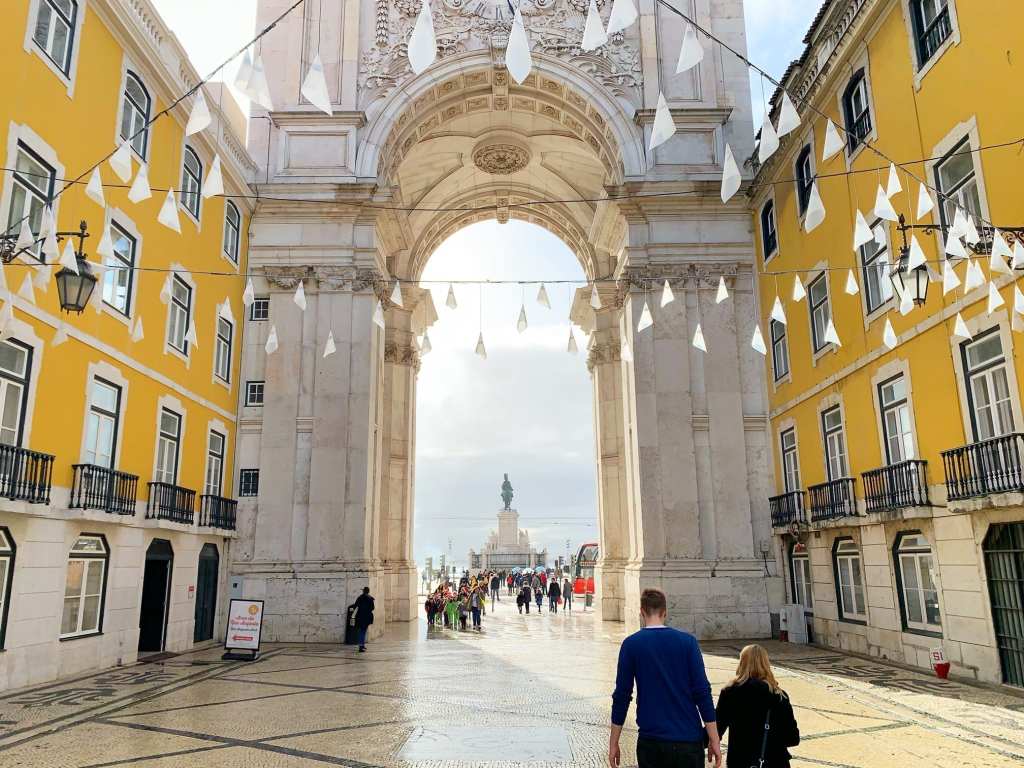

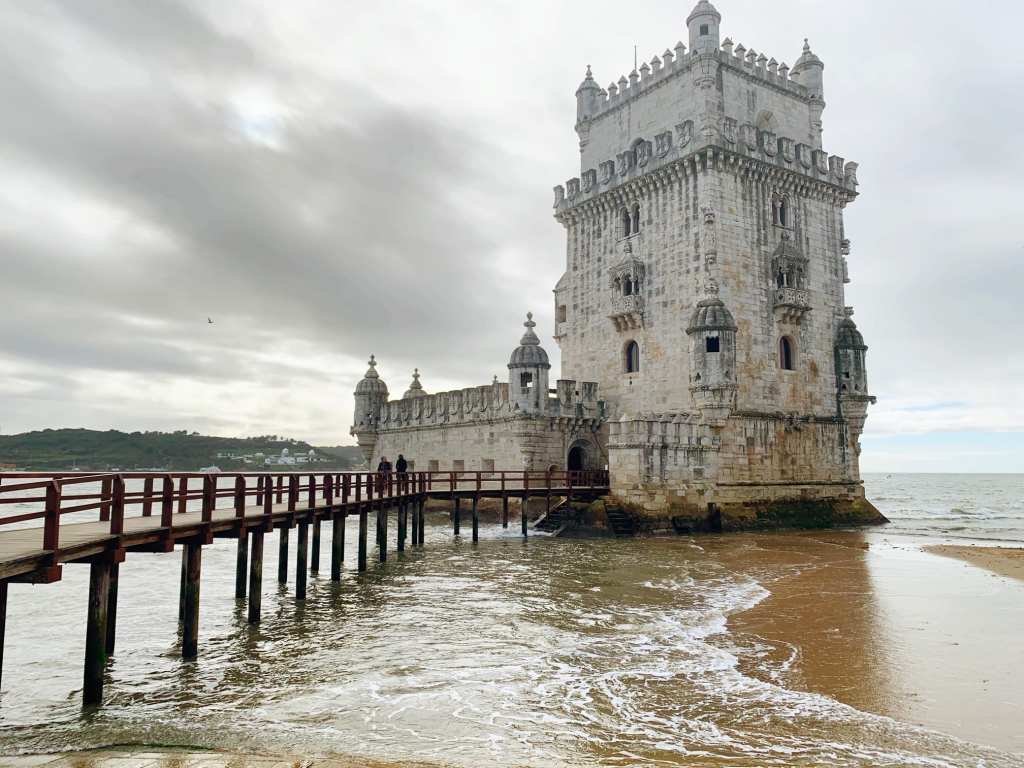













The post Portugal Highlights in 17 Photos appeared first on LandLopers.

I’ve been on a number of river cruises over the years, mostly in Europe traveling along rivers in Hungary, Austria, and France to name a few. With these experiences under my belt, I thought I knew what to expect before joining Viking River Cruises on a cruise along Portugal’s Douro River. I did not. No, due to the peculiarities of the river and the very special destination that is Portugal, a river cruise experience on the Douro is a singular event, totally unlike its cousins across the continent. Since I was surprised by, well, almost everything, I thought today I would share what some of those differences are and what makes the cruise experience not just unique, but incredibly special as well.

Pre-Cruise in Lisbon
Several river cruise companies operate on Portugal’s Douro River, but few include time in Lisbon beforehand. Sure, they have options to pay for a pre-cruise experience, but on the cruise I took with Viking it was part of the total trip and, therefore, wasn’t an extra charge. For me, that time in the capital city was essential and a highlight of the trip. It was my first time in Lisbon and I couldn’t wait to get out and explore the city. What I discovered quickly became a new favorite destination, from the incredible architecture to the food and the remarkably kind people. Viking made my time there easy as well with transfers, lots of staff on-site to help and answer questions and a 5-star pre-cruise hotel on one of the city’s major thoroughfares. No matter how you ultimately decide to experience the Douro River though, having that time in Lisbon is, I think, important.

Recurring Theme of Porto
Cruises start and end in Porto, making this popular tourist
destination an important part of anyone’s cruise experience. I didn’t know a
lot about the city before arriving, but I had read dozens of accounts by fellow
writers all lauding the ancient city, many even naming it the best in Europe. A
natural skeptic, I went into my time there with some initial detachment, but I
too fell for the allure of Porto. Porto is one of Europe’s oldest cities,
founded in the 300s by the Romans and it’s Porto that eventually lent its name
to the country of Portugal itself. Walking around the hilly city on a guided
Viking hike, I found it impossible not to be charmed by the colors and sights
of the historic center, while also trying to catch a view of the important
Douro River whenever possible. I had plenty of time on my own in the city as
well, and I used that time to delve even deeper into Porto’s neighborhoods and
history, while also eating a fair amount of local delicacies along the way.
Yes, Porto was another highlight of many for me on my Douro River Cruise, but I
know I’m not unique in that feeling.

The Ships
I have sailed with Viking many times in all corners of Europe, and I have come to know and love the design and amenities onboard their signature Longships. So it was with a lot of surprise that I first stepped onboard the Longship docked in Porto, because, while beautiful, this was not the Longship I have come to know so well over the years. The Douro River is navigable only due to a series of locks, not unlike many other European rivers. The key difference in Portugal is the size of these locks. They’re different than on the Danube or Rhine, which means the ships must also be different. The result is a fleet of “Baby Longships” that only sail on the Douro River. They have the same general layout, the same design aesthetic and other amenities as one would find across Viking’s fleet, but they’re decidedly smaller, or intimate.

At once though I was a convert; I loved almost everything about these particular Longships. They carry fewer people than the traditional European river cruise ships, about 100 people or so, and this decrease in the manifest made the experience a lot more fun. I became friends with more people on this river cruise than any other, and I attribute that entirely to the more intimate setting. Add to that the same size staterooms and a pool on the Sun Deck and I was almost immediately won over.

Food & Wine
A big reason why many people choose to take a river cruise
on the Douro River is for the wine, and Porto provides a hint as to why. Although
wine has been produced in Portugal for more than 2,000 years, Port wine didn’t
come about until the 1600s. I won’t go into what is ultimately a long story
about the relationship between England and Portugal, but suffice it to say that
their diplomatic friendship is the oldest in the world and Port wine has played
an important role in this relationship for centuries. I’d like to say that
fortified Port wine came about in some romantic fashion, but the truth is that
the Portuguese developed it to better match the tastes of the English
consumers. Eventually this wine, which was shipped from Porto (hence, Port
wine) had brandy added to the juice during fermentation, creating a stronger
and sweeter wine that was a perfect match for the palate of wealthy English
clients.
That history of Port wine is well-celebrated not only in the
city of Porto, but all along the Douro Valley. Naturally, Viking provides
plenty of opportunities to experience this unique wine in both included
experiences as well as optional excursions. Food and wine isn’t only relegated
to Porto, throughout the week passengers learn about the other wines produced
in Portugal, along with the delicious food traditions that, when paired
together, create meal experiences that are truly unforgettable.

Local Communities
Yes, Lisbon and Porto are amazing, but there’s a lot more to
Portugal than its largest cities. The opportunity to visit small towns and
villages isn’t just a perk of a Douro River sailing, it’s a reason why I love
river cruising in general. Many times we visited spots I would never have
discovered on my own, and my trip was made all the better for having
experienced them. A great example on my sailing was the morning spent in
Favaios. A very small community, it has long been known for its moscatel wines,
which is where the Viking passengers started the day. Visiting a local winery,
we learned all about the wine making process, before tasting some of their best
vintages of course. From there we visited a local bakery to learn about and try
the town’s equally famous four-cornered bread and ended our visit with a walk
through the village and a stop at the local wine and bread museum (yes,
really). Afterwards the Viking passengers were taken to another local winery
for a long and leisurely lunch that was as much fun as I’ve had in a long time.
Put all together, that day spent in a very small village was special, certainly
unique and nothing I would have discovered on my own.
European river cruises have skyrocketed in popularity in recent years for a variety of reasons and, from my experience, it’s well deserved attention. The cruises on the Douro River though are completely unlike others I’ve experienced, in all the best ways possible. So if you’re considering a river cruise but also looking for something a little different, I highly recommend learning more about the itineraries and programs Viking has put together on the Douro River.
The post What Makes a Cruise on Portugal’s Douro River Unique appeared first on LandLopers.

I’ll probably mention this throughout my coverage of Portugal, mostly because I find it so strange, but until a few weeks ago I had never visited this small but fascinating country. I suppose by itself that’s not such a bizarre anecdote, but given my own intense and life-long love of Europe and the frequency with which I find myself there, I find it odd. Regardless, I finally managed to visit when I took a river cruise with Viking Cruises along the Douro River. Since it was my first time, I decided to arrive in Lisbon a few days early to adjust to the time difference as well as to begin my Portuguese wanderings in earnest. The way I tackled this new city was somewhat of a departure for me, so today I want to share the approach I took, what I experienced and why ultimately I walked away in love with Lisbon.

Slowing Down
Normally when I travel I plan every detail to the last minute and, not surprisingly, that almost always killed whatever potential for fun was involved. I approached this trip from a different point of view. Maybe it’s the influence of that yoga practice I recently started or the fact that 2019 wore me down mentally and physically, but I had no desire to race around Lisbon. I bought a simple guidebook and did about 10 minutes of online research, but that’s it. No binders, no color-coded tabs – nothing that even hinted I was involved with the trip. The results were also not so surprising, I enjoyed every second of my time in the city. Slowing down doesn’t mean I didn’t do and see a lot, I did, it just meant that I went into the experience with a different outlook which, in turn, improved everything else. I felt no desire to do it all, since I knew it wasn’t possible. Instead every day I picked a different part of town, took the metro over and just enjoyed it. Again, this is how most normal people travel but for me it was a revelation.

The first day I took the metro, which is easy to use and inexpensive, to the historic heart of the city to wander, visit famous sites and start my introduction to Lisbon. This included a tram to and from the city’s famous castle, a spot that offers incredible views across Lisbon. But it also meant doing things that were a little kitsch, like visiting the Time Out Food Market which, although amazing, caters to tourists and foreigners. I didn’t really care about that though. It didn’t bother me that I wasn’t trying to be Anthony Bourdain as I delved into the city. I liked the Time Out Food Market because it features great cooks and menus from around the city, all conveniently gathered in one spot. I easily sampled many classic Portuguese dishes, but I also returned later on to get a pizza. No guilt was attached, I was on vacation and enjoying every second of it.

A final positive attribute to slowing down was the ability to be spontaneous. No longer tethered to a schedule or timetable, I was able to do what I wanted when I wanted to do it, and even switch things up at the last minute. That’s how I found myself somewhat unexpectedly spending the day in nearby Sintra. A very popular day trip for visitors to Lisbon, when I was doing my initial research I didn’t think I had time to go. But then once I arrived, and after everyone – everyone – I met in Lisbon told me that it wasn’t to be missed, I decided to hop on a train and venture out. A very easy 45-minute trip outside of Lisbon, in spite of some wet weather it was a wonderful day out of the city and a fun new place to explore. Travel should be about those spontaneous moments, ones that for many years have sadly eluded me.

Relaxing in Style
This slow style of travel was facilitated by where I stayed
during my pre-cruise adventures in Lisbon – the Corinthia. One of the luxury
mainstays in Lisbon, even though the Corinthia has a long history in the city,
the entire hotel felt fresh and new. It was also the ideal spot for me to relax
and just enjoy myself. I arrived into Lisbon in the mid-afternoon, and since it
was early December I only had a couple hours of daylight left. Coupled with
extreme exhaustion from jet lag and a long trip, I made the very unusual
decision for me not to do anything touristy that day. Instead, I devoted what
remained of that first afternoon in Lisbon to relaxing and self-care, all facilitated
by the Corinthia.

The hotel features 518 guestrooms and suites, 76 of which are Executive Club rooms on the top floors. Settling into my spacious Junior Suite, I very quickly made good use of the Executive Club Sky Lounge not only for the one of a kind views, but for the many amenities offered there, most notably fantastic food and a generous supply of drinks. My room itself was very much a haven throughout those first days in Lisbon. Very well appointed with every amenity one would expect from a great luxury hotel, it was honestly one of the most comfortable rooms I’ve enjoyed in a very long time. What ultimately helped me relax the most though was totally unexpected – the Spa at Corinthia Lisbon. One of the largest in Europe, this incredible spa is not at all what I expected to find. This massive 3,500 square meter facility has everything anyone needs to decompress properly, from just about every treatment imaginable to a relaxing Aqua Therapy Facility the likes of which I’ve never seen before. When coupled with the room and fantastic hospitality, the Corinthia Lisbon not only helped me relax, but set me up for success as I slowly explored Lisbon.

Mindful Travel
All of this leads to one thing, a more mindful way of
traveling. Several months ago I did one of the best things I’ve ever done for
myself – I started attending a yoga studio on a very regular basis. I’d never
tried it before, but it always interested me and I was excited to try something
new. What I honestly didn’t expect was what it has done for me mentally in addition
to the physical benefits. My brain has always raced a million miles a minute
and I have always, always, found it difficult to de-stress and relax. In fact,
I had just resigned myself to a life of always being on edge. That’s not
healthy and it’s my yoga practice that has since put me on a path towards a
certain level of both mental and physical peace. This necessarily translates to
all aspects of my life, including travel. Racing around a new city just doesn’t
make sense to me anymore and it certainly doesn’t sound fun. Instead, I looked
to friends and others and was inspired by their travel style; namely, enjoying
themselves. It sounds weird, but for far too long I’ve approached travel as a
job and not always as something I love passionately. You can imagine the
results; I had begun to fall out of love with travel. Lisbon was a chance for
me to see and do exactly what I wanted and when I wanted to do it, which has in
turn had amazing effects on my state of mind. I enjoyed my time in Portugal
more so than any other long trip in recent memory and it reawakened that basic,
innate love affair that I have always had with travel. I’ll explore these
themes in a longer post, but I wanted to share it here to demonstrate how much
it transformed my experience in Lisbon.
When I first started writing this post I thought I’d include 4-5 places to visit, a few things to eat and so on. I’ll probably do that at some point, but I first wanted to share the process through which I enjoyed and ultimately fell in love with Lisbon. Anyone can look up museums in a guidebook, but understanding the practice of travel is a much more nuanced concept and much more important than visiting the major attractions in a new city.
The post Slowing Down & Learning to Love Lisbon appeared first on LandLopers.

2019 is now officially over, thank goodness, and since this is the start of the New Year I thought I would share some of my top travel picks for 2020. Some are obvious choices, others a little more unexpected but all are amazing places to discover for one reason or another. Also, these are in NO PARTICULAR ORDER. I don’t want to see anyone complaining that one destination is ranked higher or lower than another one; they all have my love and admiration.
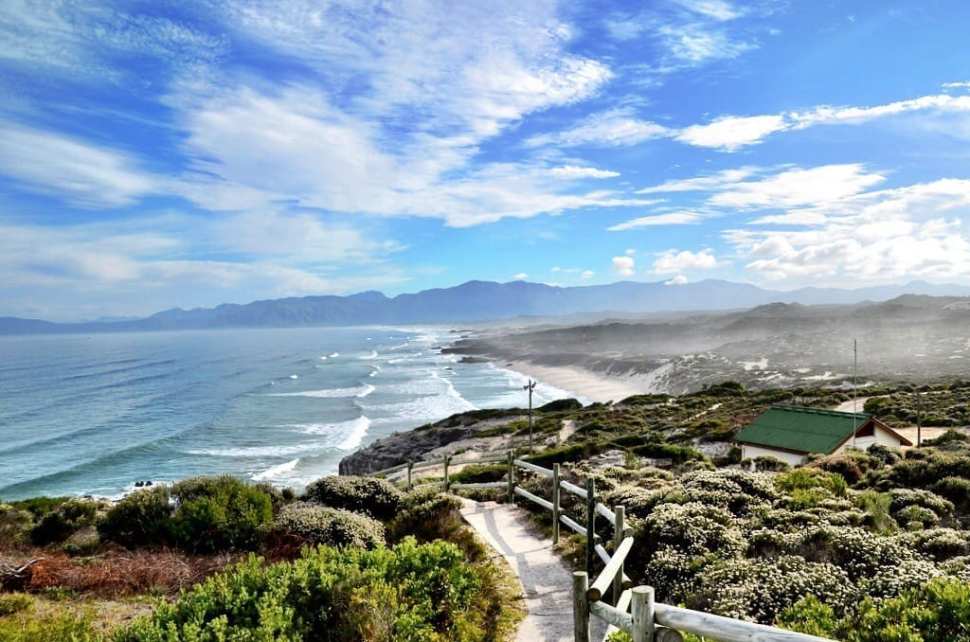
South Africa
It’s been a few years since South Africa has been the star
of travel media coverage, which is unfortunate. After making some incredible
headway in travel and tourism, the nation took some steps backward making
planning a trip there more challenging. What never changed are the many reasons
to visit, which is why I’ve included it on my 2020 travel list. With new
direct, non-stop options from the US and other points around the globe, getting
to South Africa is easier than ever, and once you’re there you’ll be spoiled
for choice. If you’re an urban explorer then cities like Johannesburg and Cape
Town won’t disappoint thanks to their unique histories, great places to eat
and, in Cape Town, the natural beauty that is found everywhere. It’s that
nature though which draws most first-time tourists to South Africa, and getting
out of the cities is absolutely essential for all visitors. The winelands are
amongst the oldest in the world, and new hotels and restaurants are constantly
popping up to cater to the oenologically minded. Safari however is arguably the
most popular natural experience to enjoy, and there are seemingly countless
ways to enjoy the country’s wildlife and at every budget level. South Africa
really is the total travel package and is a trip no one soon forgets.
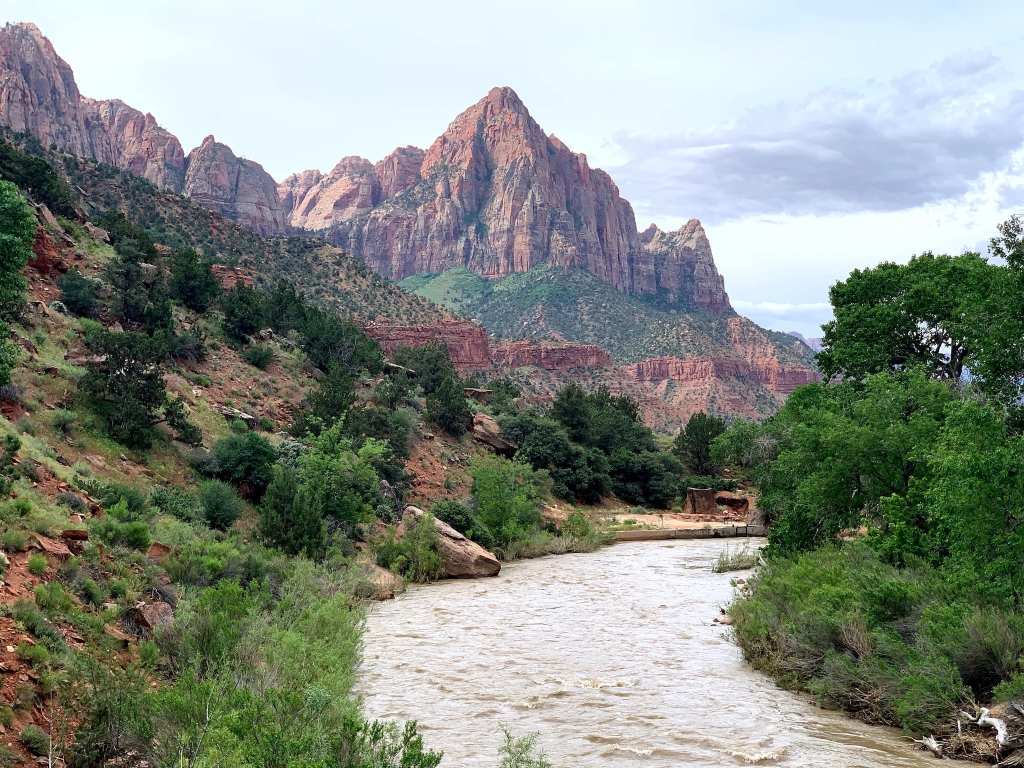
National Parks
I feel as if I’m running the risk of talking about the
National Parks too much, but I can’t believe that would ever be possible. Very
accurately called America’s Best Idea, the 419 sites included in the National
Park Service system aren’t only unparalleled in the country, but the world.
Most people only consider the 61 major National Parks, but the entire system is
much more expansive and if you do some research you’ll probably realize that
there’s one closer to you than you may think.
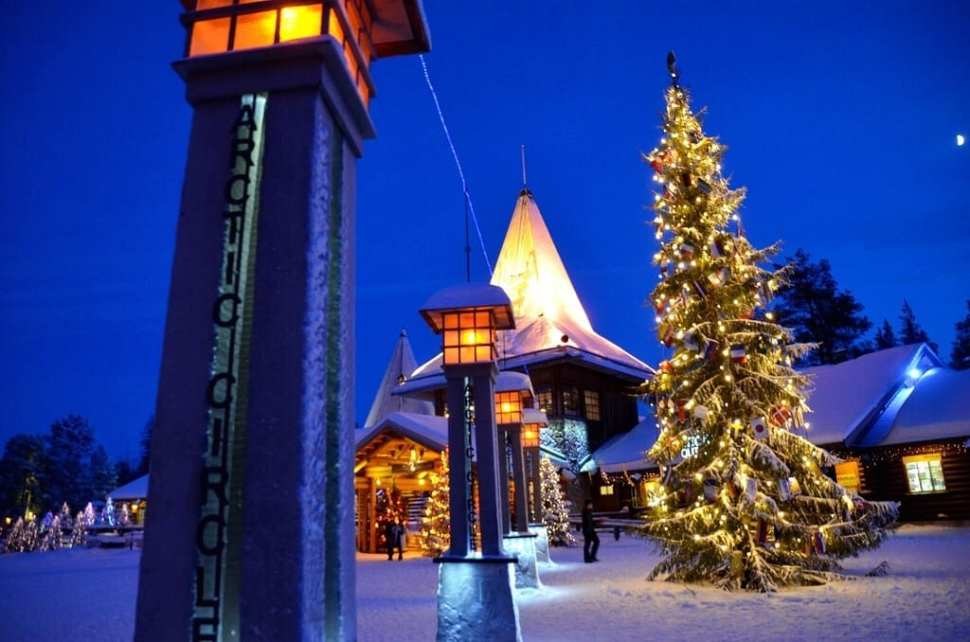
Rovaniemi, Finland
For whatever reason, remote destinations fascinate me and I
love visiting them perhaps more than even the largest cities in the world. I
usually tend to visit Northern areas though when it’s cold outside, but cold
doesn’t even begin to describe the Arctic temperatures I found in Rovaniemi,
deep in Finnish Lapland. This huge region is mostly woods, lakes and streams,
but it’s also home to Santa Claus. In what can only be described as a brilliant
marketing move, years ago Rovaniemi lauded itself as the official home of Santa
Claus, a moniker that stuck. You should visit Rovaniemi not only to see Santa
Claus, but also to spend time outdoors whether it’s snowmobiling, mushing with
sled dogs or spending the night in a remote cabin learning about the Finnish
obsession with both sauna and nature.
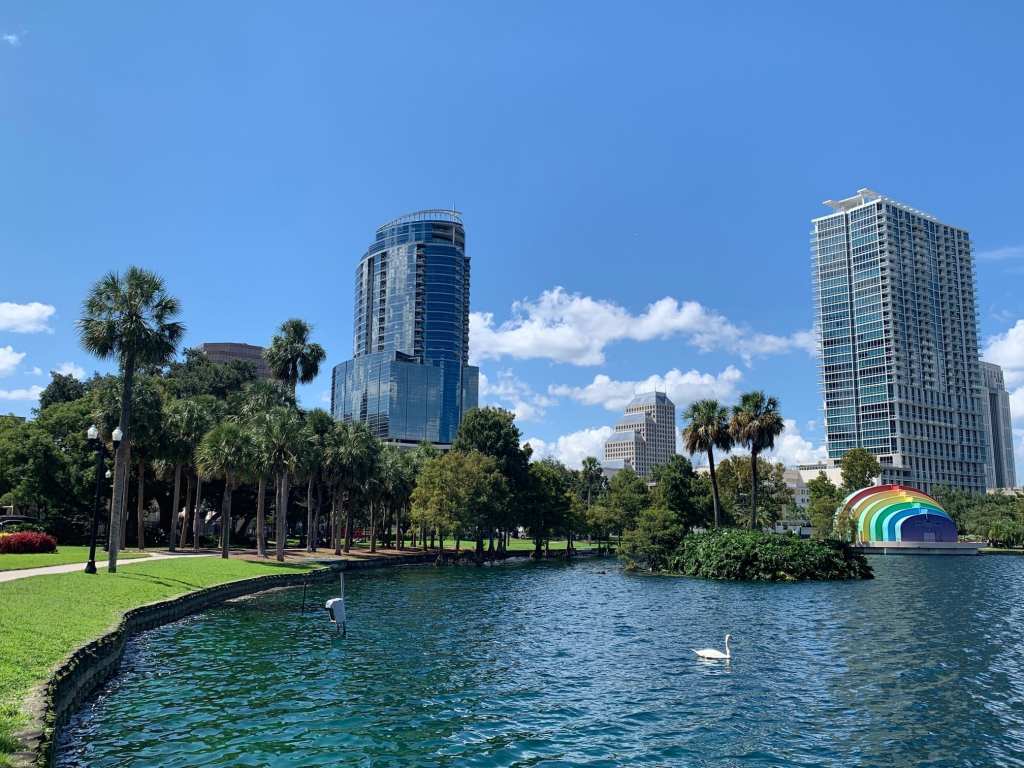
Orlando, Florida
It may seem silly to include the most popular tourist
destination in the country on this list, but hear me out. Yes, the theme parks
have added many new and fun features, but Orlando is on this list for
everything there is to do outside of the parks. While visiting Orlando in 2019,
I had the opportunity to explore more of the city itself, and I found some
really lovely and fun spots everywhere I went. What might be most notable
though is its food scene – much more dynamic than one would think. Home to one
of the largest Vietnamese communities in the country, the opportunities to
enjoy authentic Vietnamese cuisine is nearly unparalleled in the country. More
than Southeast Asian delicacies though, many creative chefs have opened their
doors in recent years, creating what is a surprisingly varied, dynamic and
delicious foodie experience.
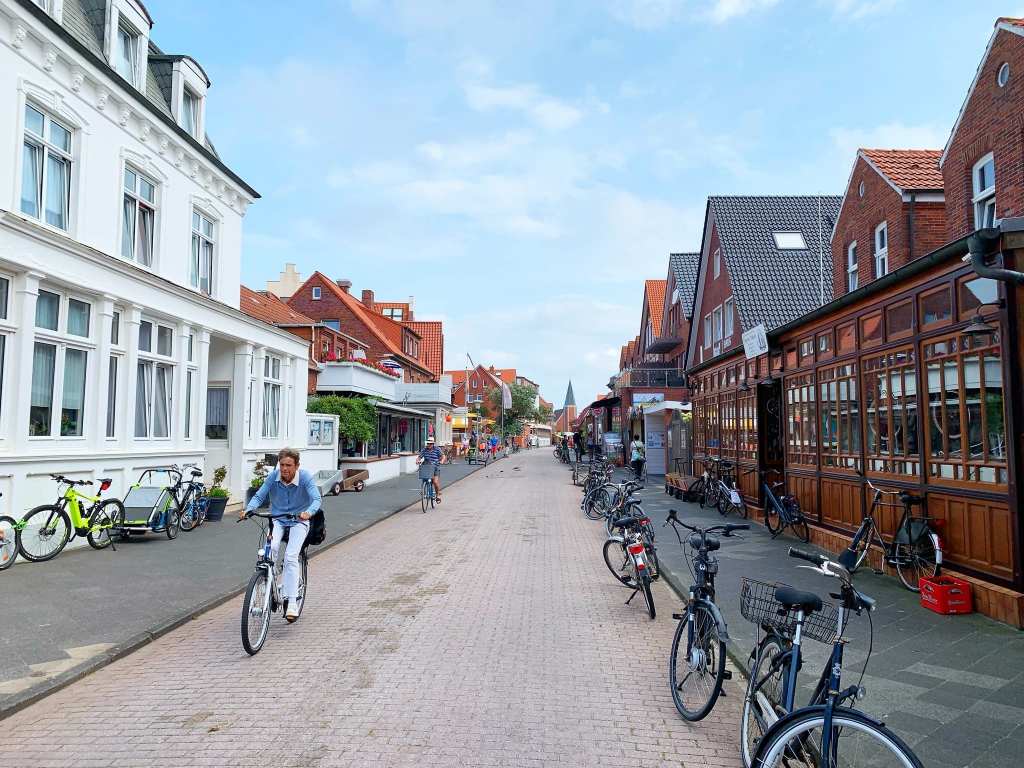
Juist, Germany
Most people don’t associate Germany with islands but, as I
learned this year there are some fairly incredible islands just off the coast
of Germany, including Juist. To be clear, Americans may be surprised to learn
about Germany’s islands, but they’ve been well known to European tourists for a
long time, and with good reason. Juist in particular is a remarkably special
place thanks in large part to the absence of any motorized vehicles That’s
right, motorized transportation is not allowed on Juist, which means that the
only way to get around is by bike, foot or horse-drawn carriage. Rather than be
an annoyance, it’s a wonderful way to slow down and truly connect with the
destination in a way that’s normally impossible to do. Add to that great food
and beautiful beaches and this is one vacation spot for your travel to-do list.

Emilia-Romagna, Italy
Italy is a perennial favorite destination for tourists from
around the world, but there’s a lot more to the country than the most popular
spots like Rome, Florence and Venice. One of my favorite regions is one that I
call quietly famous, Emilia-Romagna. Home to some of the world’s most favorite
foods, this is one of the best places to visit if you like to eat. Parma ham,
balsamic vinegar, parmesan cheese, lasagna, ragu sauce and much more all hail
from this region. There’s much more to enjoy than food though, including
learning about Emilia-Romagna’s impressive automotive history. Legendary
manufacturers like Lamborghini, Ferrari and Ducati can all be found here, also
offering unique tours options for visitors. If you’re like me though and enjoy
a nice city to explore, there are a few to include, most notably Bologna. The
largest city in the region, its history goes back to before the Romans and its
university has been one of the most important in Europe for centuries. Yes,
head to those famous cities in Italy but also be sure to explore other areas of
the country, like Emilia-Romagna.
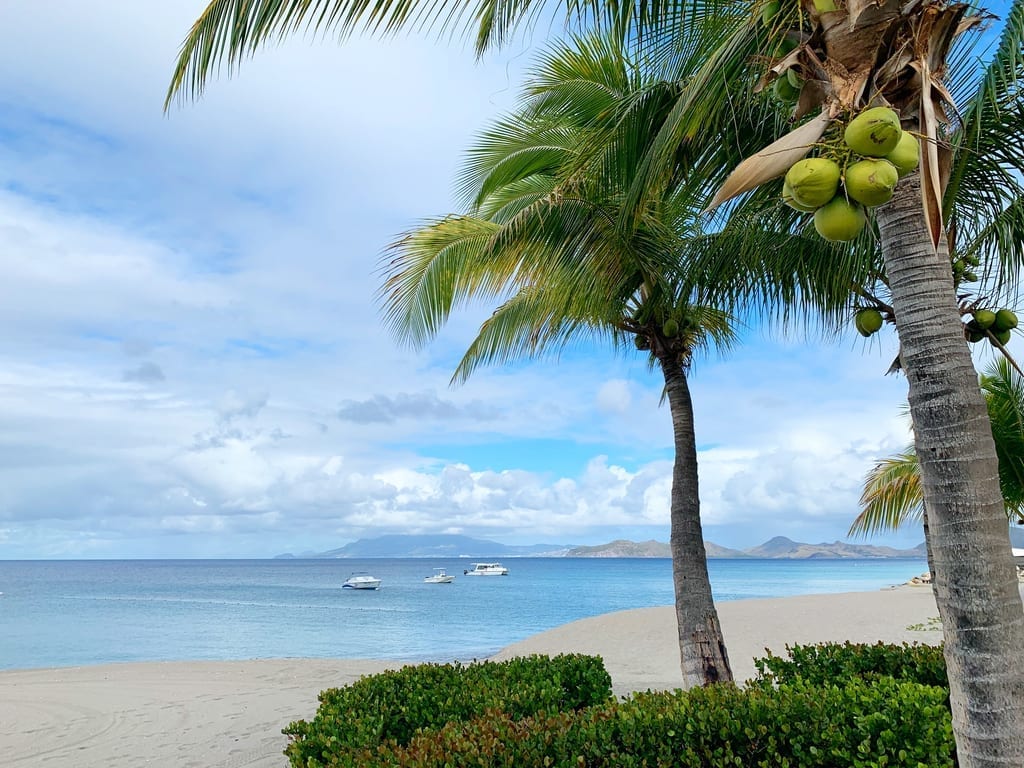
Nevis
I was on Nevis to spend some time at the incredible Four
Seasons Nevis – as idyllic a retreat as one come hope for. I discovered a lot
more than a luxurious resort though, I very quickly became entranced by the
island itself. Although Nevis is not a large island, the landscapes do vary
widely but no matter where I found myself it was always beautiful. There are
plenty of spots throughout the US, Mexico and Caribbean if all you want is a
sunny beach. If you’re like me though and want an experience that feels unique,
personalized and even adventurous, then Nevis is one of the best options.
Thanks to the small size of both the island and the Four Seasons Resort Nevis,
nothing feels prepackaged or formulaic because, well, it’s not. This is not
your massive industrial-style resort experience, this is a calming and
restorative travel experience that is unlike many others in the Caribbean.
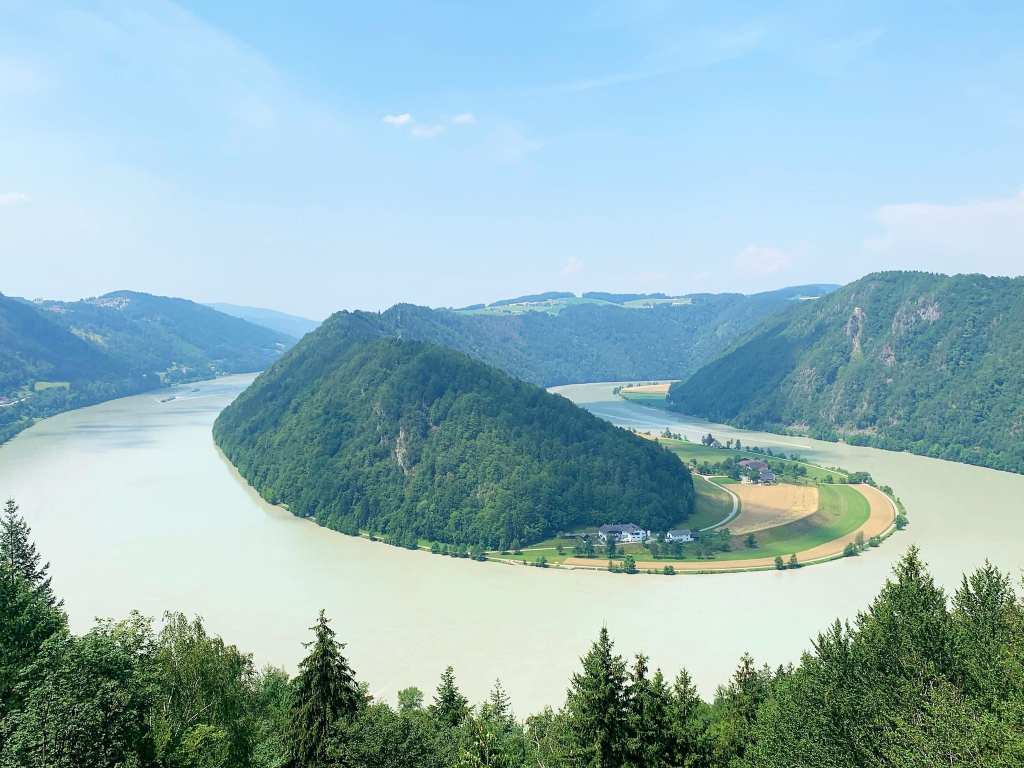
River Cruising
An equal opportunity traveler, I enjoy mixing up how I
experience the world, which is why I like the occasional cruise – including
river cruises – to see new to me spots. Unlike their ocean-going cousins, river
cruising is a much more individual and intimate experience. The ships are smaller,
with anywhere from 100-200 people on board, and the access to the towns and
cities along the rivers are much more convenient than deep-sea cruise ports.
The most popular river cruises are found along the waterways of Europe, but you
can find fun river cruises all around the world including in Egypt, Myanmar and
China.

Hong Kong
Hong Kong has sadly been in the news a lot lately for all
the wrong reasons. In spite of those images we’ve all seen on TV though, it
remains a fantastic destination to visit whether you have a day or a week. At
first blush, Hong Kong seems little more than a flashy city full of people. But
once you delve a little deeper, then you start to discover the real city that
lies just beneath that shiny veneer. The best way to better understand Hong
Kong is through the city’s favorite pastime, eating. Whether it’s 3-star
Michelin restaurants, or some of the best dim sum in the world, you won’t walk
away hungry or disappointed. Also be sure though to explore the city, visiting
Lantau Island and even the newish PMQ, a cultural hub showcasing some of the
best emerging creative minds in the city.
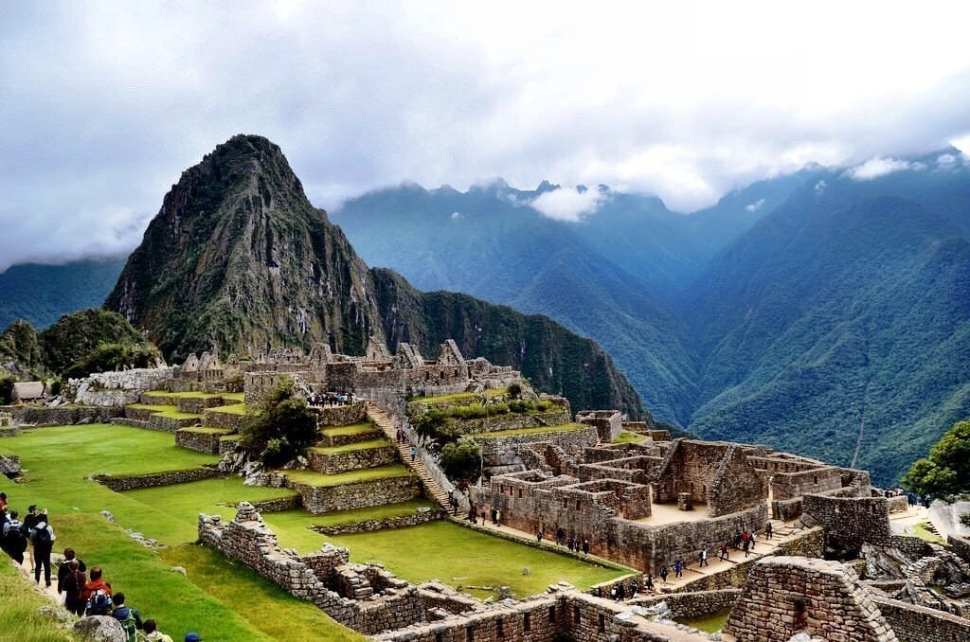
Machu Picchu
Let me just say straight up that no, I didn’t do the
four-day Inca Trail hike. I have massive problems with both my knees and spending
four days in pain and suffering was not high on my to-do list. No, instead I
visited the famous ancient city like thousands of others, by taking the luxury
train to the weird mountain town of Aguas Calientes and then a short bus ride
up to Machu Picchu itself. This new world wonder surprised me in a lot of ways,
most notably how beautiful almost every part of it is in person. All we tend to
see is that ONE iconic photo overlooking the long forgotten mountain outpost of
the Inca, but there’s so much more to it than that one angle. Spending a few
hours exploring it I developed an appreciation not only of how it looked, but
the skill it took to design and build. There are many fantastic Inca sites to
explore in Peru, but it’s really only at Machu Picchu that you begin to
understand the true genius of this sadly long lost civilization.

Game of Thrones in Northern Ireland
When I was planning my return to Ireland with Tourism
Ireland, there was one experience I knew that I didn’t want to miss, a day
living out my Game of Thrones fantasies in Northern Ireland. I’d seen photos of
the special tour for quite a while, but it wasn’t until I found myself in
County Down, Northern Ireland when I finally had the chance to participate. Winterfell
Tours offers a number of different ways to learn more about the Game of Thrones
filming locations, from spending a few hours at Winterfell, Castle Ward, to
exploring more sites around the county. Game of Thrones isn’t for everyone, I
get that. But this experience in Northern Ireland is so much more than visiting
spots where they filmed the fantasy series. It’s about learning the history of
the county and experiencing its gorgeous natural landscapes. If, along the way,
you happen to meet a direwolf and throw an ax, then all the better.

Portugal
My only regret with visiting Portugal is that it took me so
long to first visit what is an extraordinary destination. It’s not that I
avoided Portugal, far from it, but the stars just never aligned until I joined
a river cruise through the Douro River just a few weeks ago. To be clear,
Portugal is a very unique and distinct destination that is thankfully unlike
any other spot in Europe. I think I
thought it would be like Spain, but that’s certainly not true. The people are
the nicest I’ve ever met in Europe, the food is incredible, the cities vibrant
and alive and the natural beauty incomparable. Whether you decide to take a
river cruise or explore on your own, just make sure to explore sooner rather
than later.
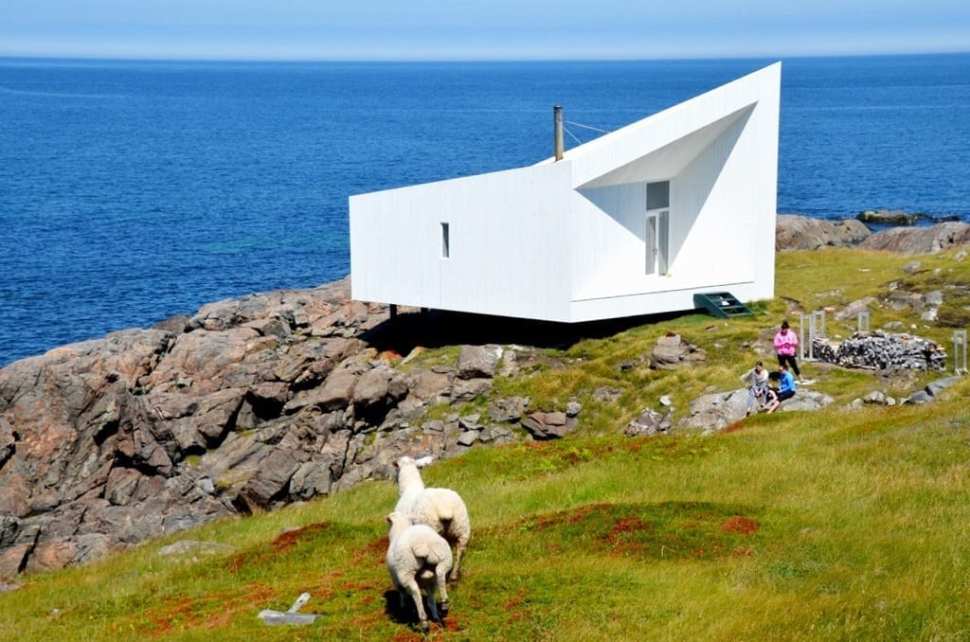
Canadian Maritimes
I have spent a fair amount of time exploring Canada and
almost never have I had a bad experience. But not all parts of the country get
equal attention by international tourists, which is one reason why I want to
highlight the provinces that comprise the Maritimes. Specifically, over the
last several years I’ve had the great opportunity to explore two Maritime
provinces, Newfoundland & Labrador and Nova Scotia. Made famous by the
ultra-luxury hotel on Fogo Island, Newfoundland has had its fair share of press
lately, but there’s so much more to the province than a nice hotel. Whether
it’s St. John’s or taking a coastal road trip, the scenery, food and people
will quickly endear you to the province. Many of those qualities aren’t endemic
to Newfoundland though, they’re part of the overall Maritime experience, as I
learned this year spending a week in Nova Scotia. Those same kind and very
curious people made the trip remarkable, accentuated by natural wonders like
the Bay of Fundy and a surprisingly high level of great food. So skip some of
the more flashy provinces and instead plan to spend some time along the
gorgeous Atlantic seaboard of Canada.

Golden Triangle
Ever since my first trip to Thailand many years ago, I have
truly loved this part of the world. Also traveling around Laos and Myanmar,
that love has only grown over the years and was expanded upon last year when I
visited the Chinese side of the Golden Triangle in Xishuangbanna or just Banna.
Thanks to its spot in extreme Southeastern China, Banna is completely unlike
any other spot in the country. Located adjacent to the Golden Triangle,
neighboring countries of Myanmar, Laos and Thailand are very close and, other
the years, that’s meant a fluid border with a lot of cross-cultural sharing.
Exploring more of the region, the buildings all look Thai, the smells are Thai
– everything about the place screamed Chiang Mai instead of China. It was an
odd sensation, one that I never expected but one that I dearly enjoyed.
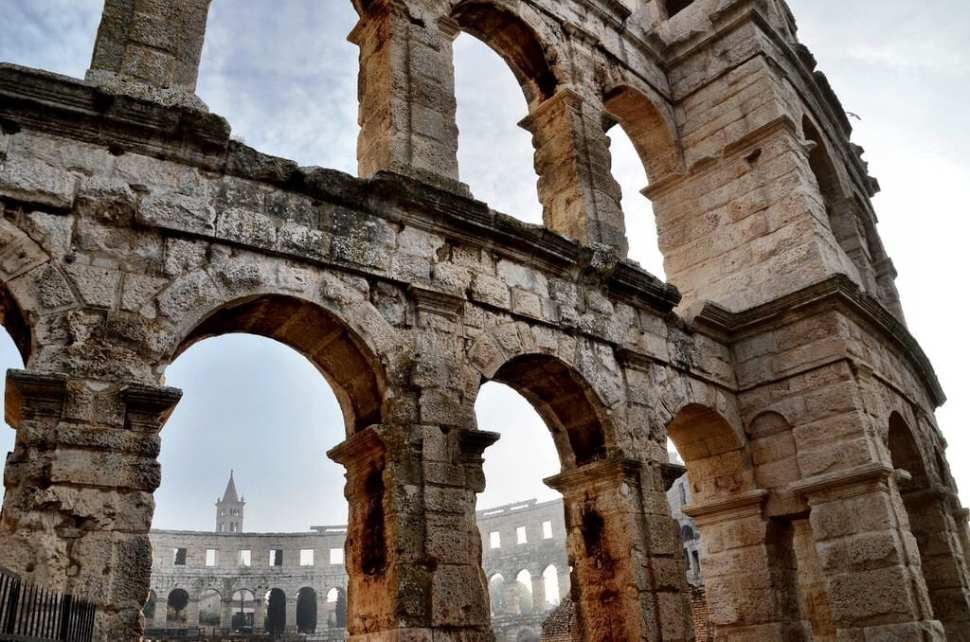
Istria, Croatia
So much of the travel love in Croatia seems to go to
Dubrovnik, that I thought I should highlight a lesser-known area of the country
– Istria. This region found in the northwest portion of the country is as
unique an area as you can imagine. It’s actually shared by three countries,
Croatia, Slovenia and Italy, and has a rich history and culture all of its own.
In fact, if you ask residents where they’re from, they’re most likely to say
Istria first and Croatia second. There are many great towns and cities to visit
here, but two I recommend are Rovinj and Pula. Each city has its own unique
appeal and no matter what you do, make sure not leave Istria without sampling
some of the famous olive oils and truffles cultivated around the peninsula.
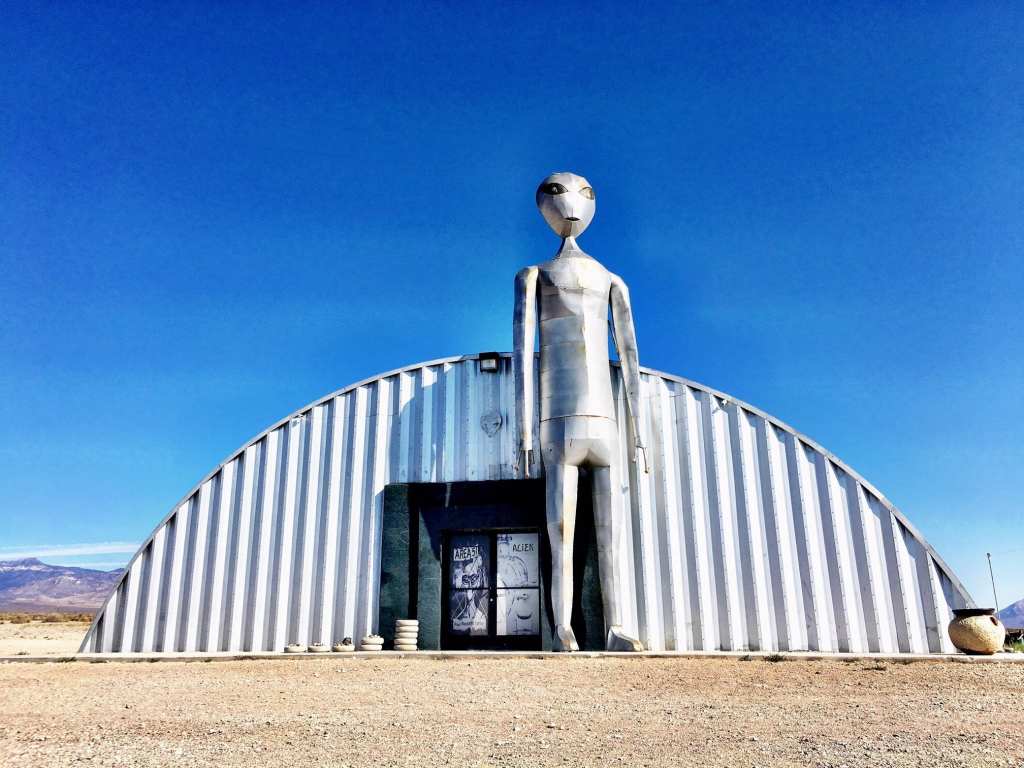
Extraterrestrial Highway, Nevada
Otherwise known as Nevada State Route 375, this is a 98-mile
stretch of road that starts at the intersection of U.S. 93 and the
Extraterrestrial Highway and continues west to the intersection of the Highway
and U.S. 6. Thanks to the fact that Area 51 rests along the highway, this area
has long been known for alien sightings and a fierce belief in life from other
worlds visiting the remote Nevada desert. Over the years the road has developed
into what it is today, one of the quirkiest but also one of the loneliest
stretches of road in the country. Visitors should go to admire the desert
landscapes, enjoy fantastic blueberry pie at the Little A’Le’Inn, visit (sort
of) Area 51, and spend the night at a haunted hotel in Tonopah, Nevada.

Egypt
I vacillated over whether or not to include Egypt, but I
think that it’s such an important country to visit it simply has to be on this
list. The first modern tourist destination, the wonders of Egypt have called to
travelers around the world for generations. And with good reason, the monuments
and sites so well preserved aren’t just nice to behold, they are world wonders
in every sense of the term. Traveling through Egypt, the entire experience from
Cairo to Aswan was much better than I had expected, but the real highlight of
course was visiting the Great Pyramids of Giza. Located close to modern day
Cairo, these massive monuments to power have been amazing visitors since the
moment they were first built, popping up even in Ancient Greek and Roman travel
guides of the day. Standing there immediately in front of them it was hard to
mentally reconcile the fact that I was actually there. Having seen them in
books, magazines and movies all of my life, it was hard to consider the fact
that I was there at that moment in time. Since tourism is so low right now,
there weren’t many other tourists around me, creating a special and rare moment
of privacy, allowing for some introspection and time to fully grasp the
importance of the moment.
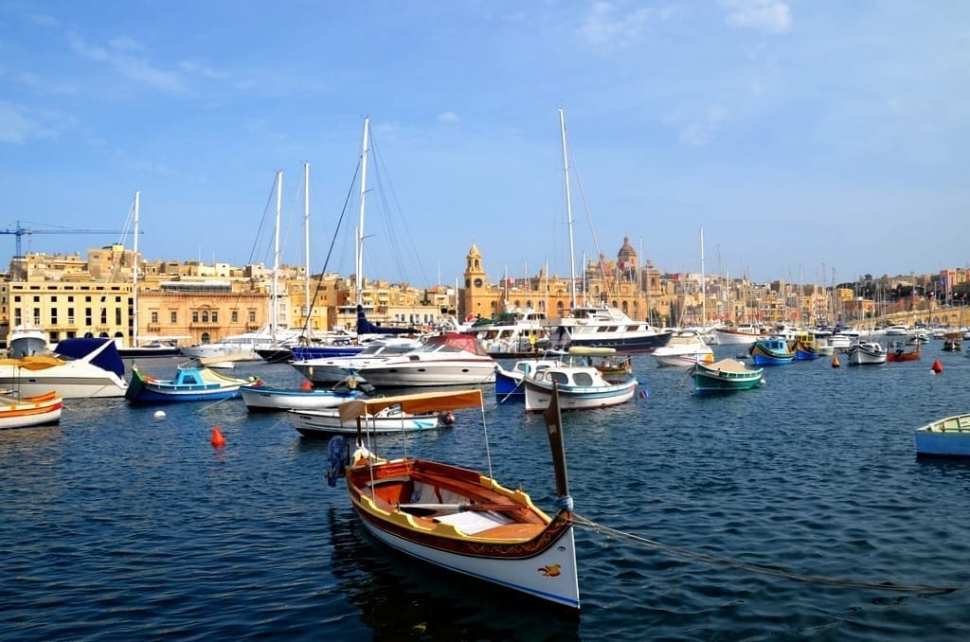
Malta
The quirky island nation of Malta in the Mediterranean has a
long and important history, but it’s one not many people actually know a lot
about. Long considered by Europeans as a sunny getaway, others from around the
world are learning about this small country not just for its beaches and
turquoise blue waters, but also for its art, architecture, cities and
incredible history.

Non-Coastal America
I’ve explored a lot of my own country in recent years,
travel experiences that I didn’t know I needed. These trips though were perhaps
my most important of the year as they brought into focus the realities of the
US in 2019. As it turns out, things aren’t nearly as bad as those of us who
live along the coasts think and driving across America was one of the most
gratifying experiences of my life. While I have had the opportunity to visit
many different parts of the country, the most memorable adventure was driving
the entirety of Route 66. More than enjoying the kitschy appeal of decades long
past, the most important aspect of the drive was meeting new people along the
way. Turns out the country isn’t the seething cauldron of anger that the news
media would have us believe, far from it. No, instead I found people living
their lives just like anyone else, and also taking pride in the communities
they call home. It’s important I think for everyone, American or not, to leave
behind them the glittering cities along the coastal edges and instead delve
deeper into the US, to learn what really makes us tick and to have a lot of fun
along the way. Cleveland, Detroit, St. Louis, Oklahoma City, Albuquerque and
many other cities are all fantastic places to spend some time exploring, and
they’ll teach you more about what it means to be American along the way.
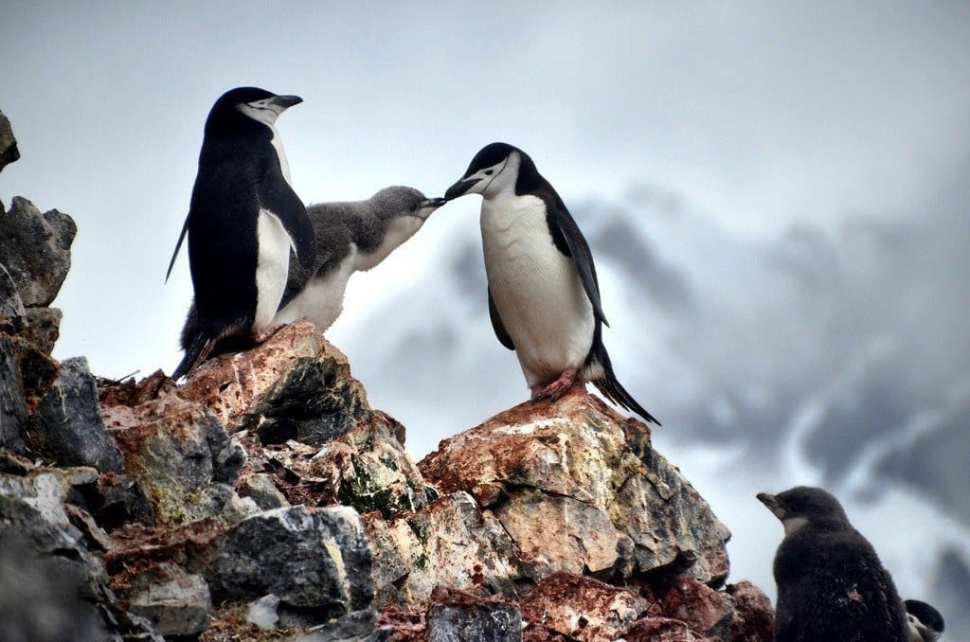
Antarctica
If any continent lures travelers with the promise of special
moments, it’s Antarctica. Hard to reach, hard to travel around it’s one of the
last few truly adventurous trips still available to us in the modern era. And
my own trip to Antarctica did indeed deliver those unique moments in spades.
Aside from the impossibly cute (and slightly dirty) penguins though, it’s the
seemingly impenetrable landscapes that impressed me the most. After hiking up a
snowy switchback path to the top of a hill, I was met with one of the most
impressive scenes I’ve ever witnessed. The icy waters extended into the horizon
and all I could see were vast quantities of rock, ice and water. It seemed to
go on forever and I have never felt smaller in my entire life. Standing there
on the bottom of the world, it was an important moment to help quantify the immensity
of the planet. It’s a fact that we modern travelers tend to forget. In an age
when I can hop on a nonstop flight and be in Hong Kong tomorrow, it seems as if
the world has never been smaller. But we forget just how massive this beautiful
planet is and how many unique experiences there are to be had.
The post 20 Places You Should Visit in 2020 appeared first on LandLopers.